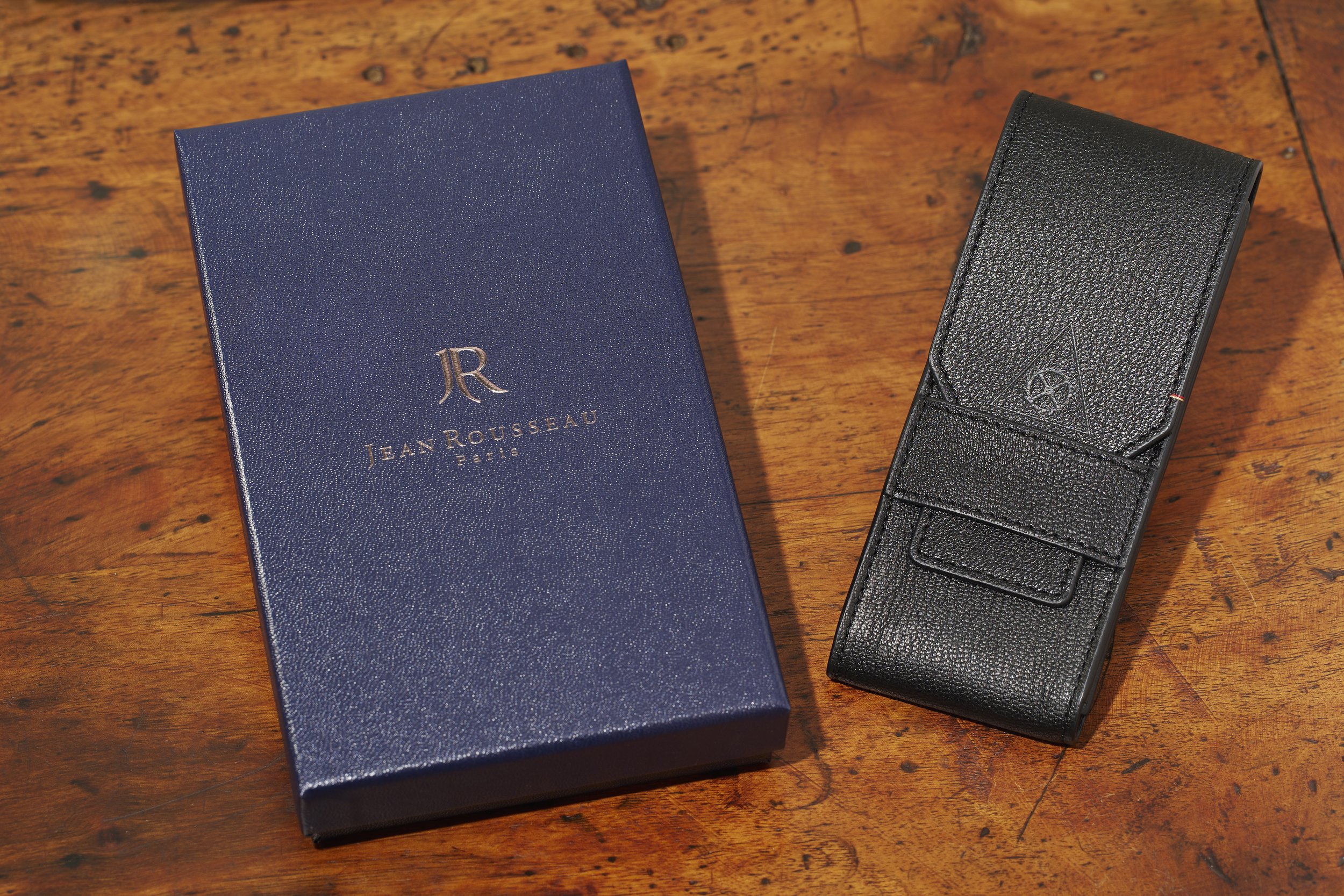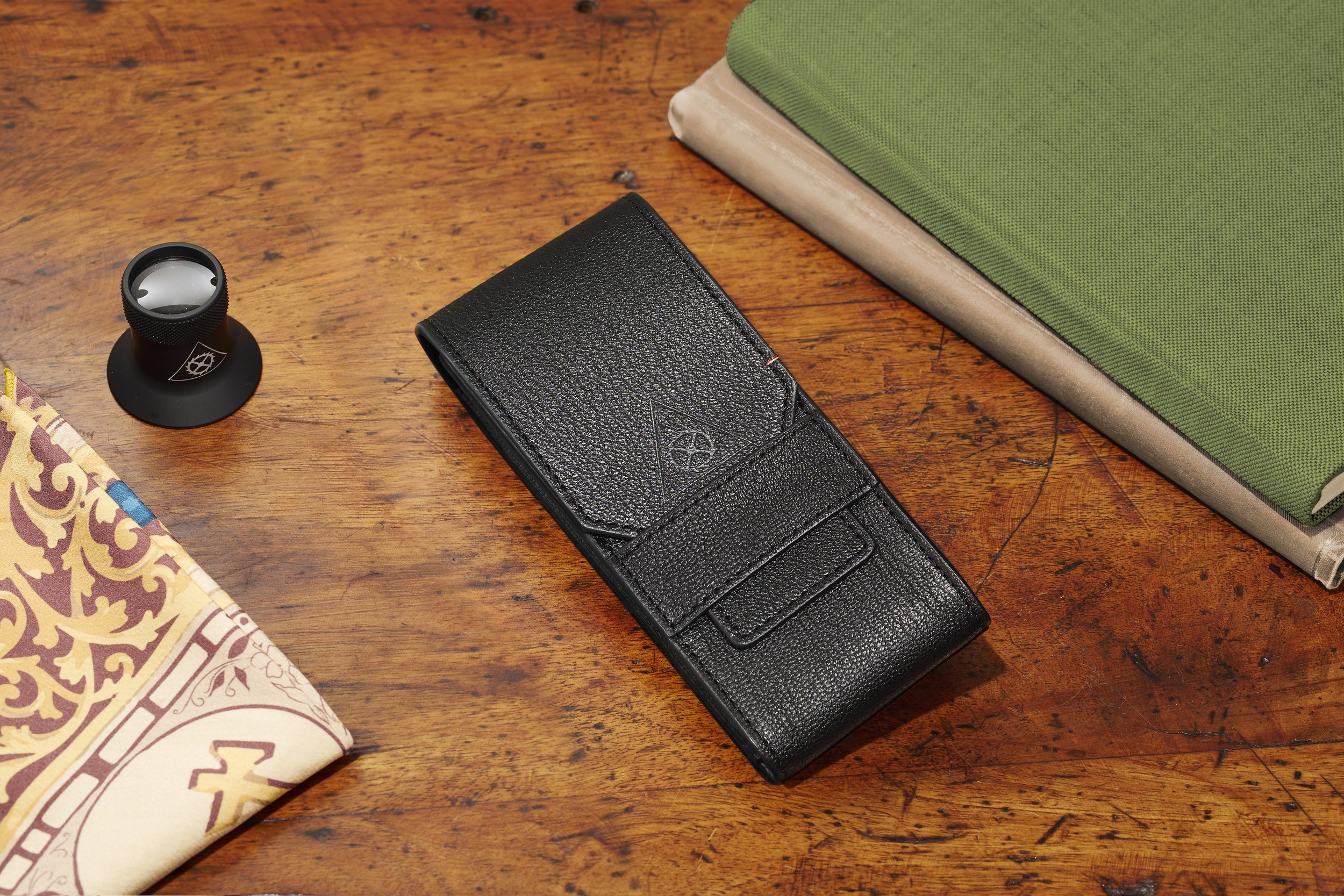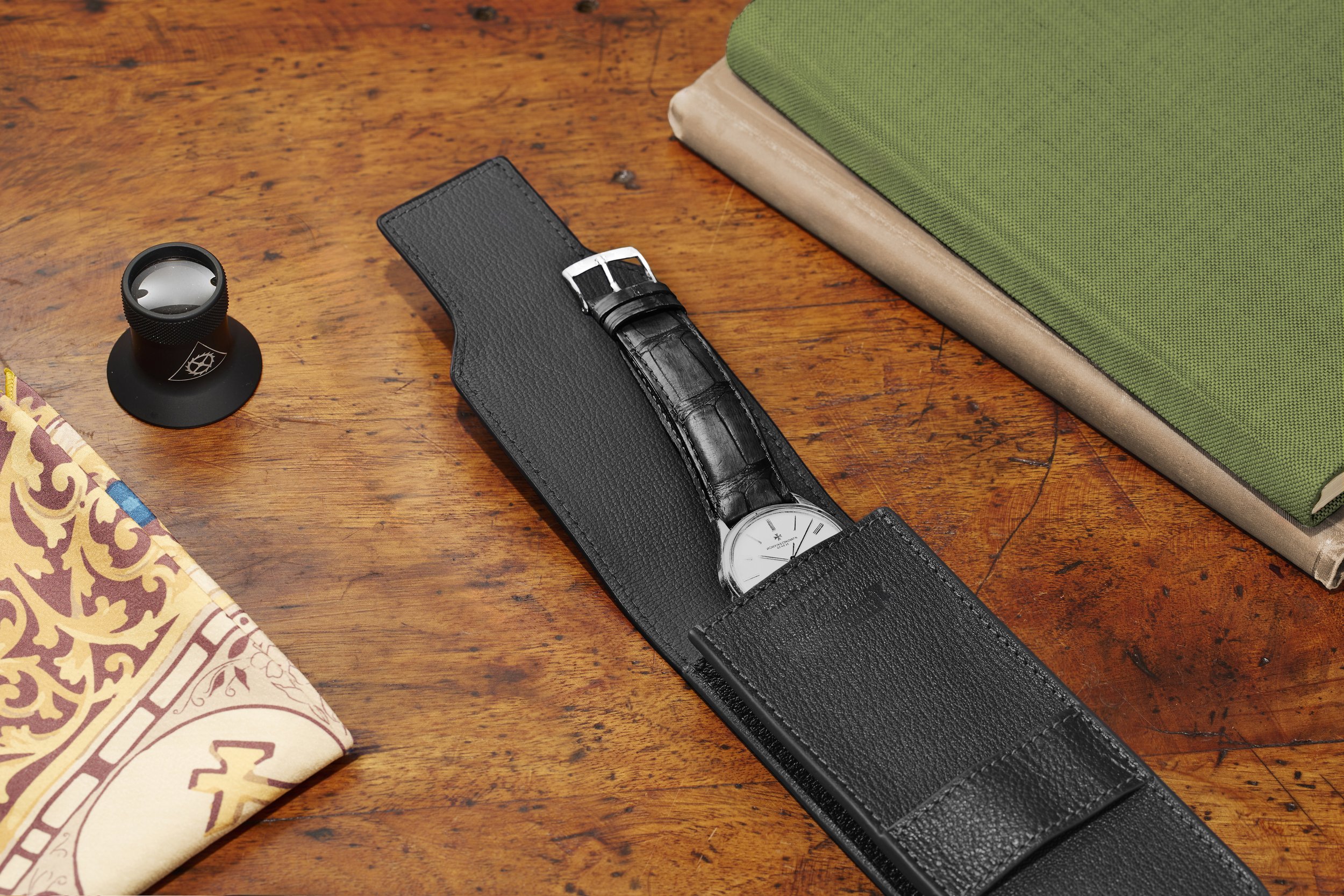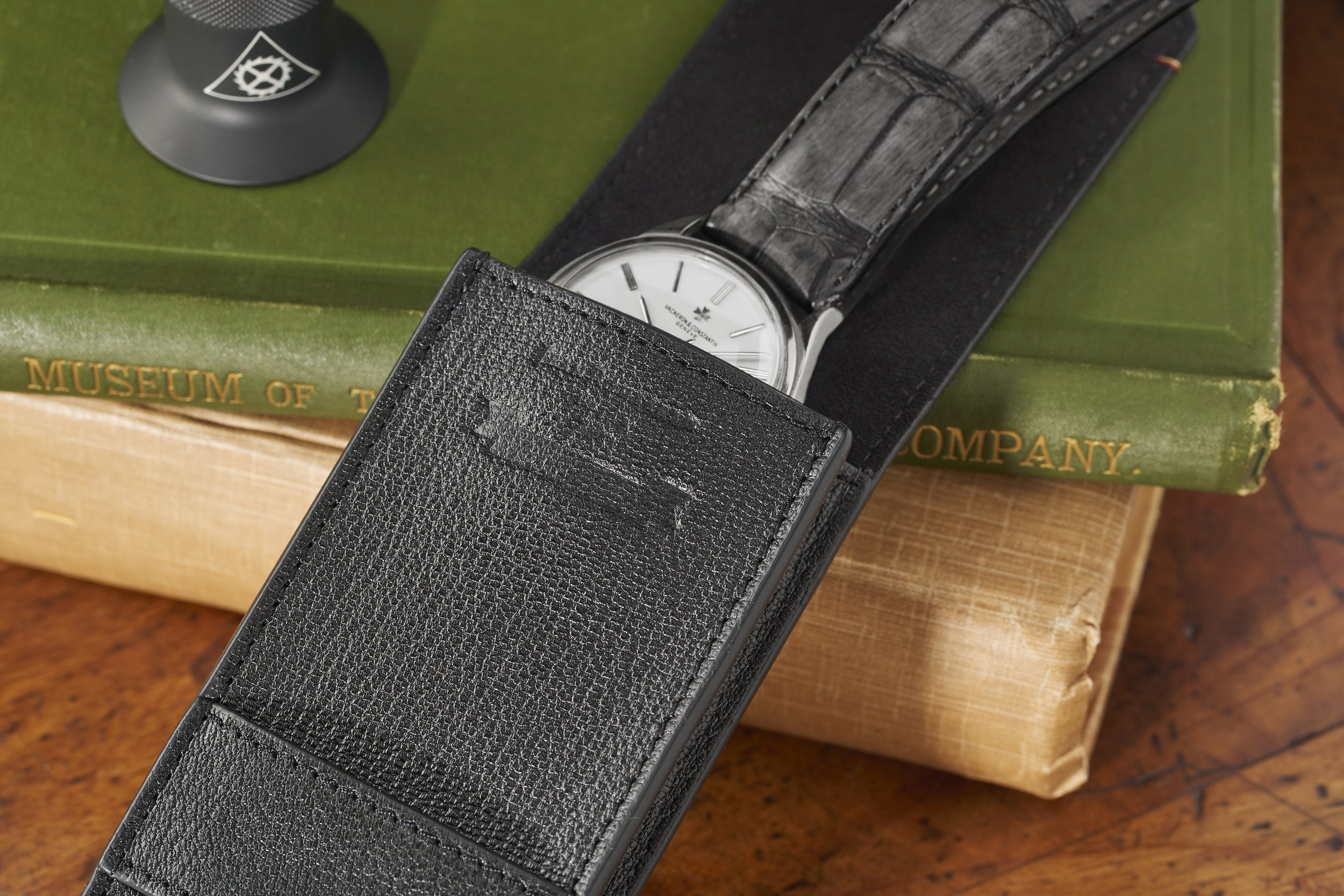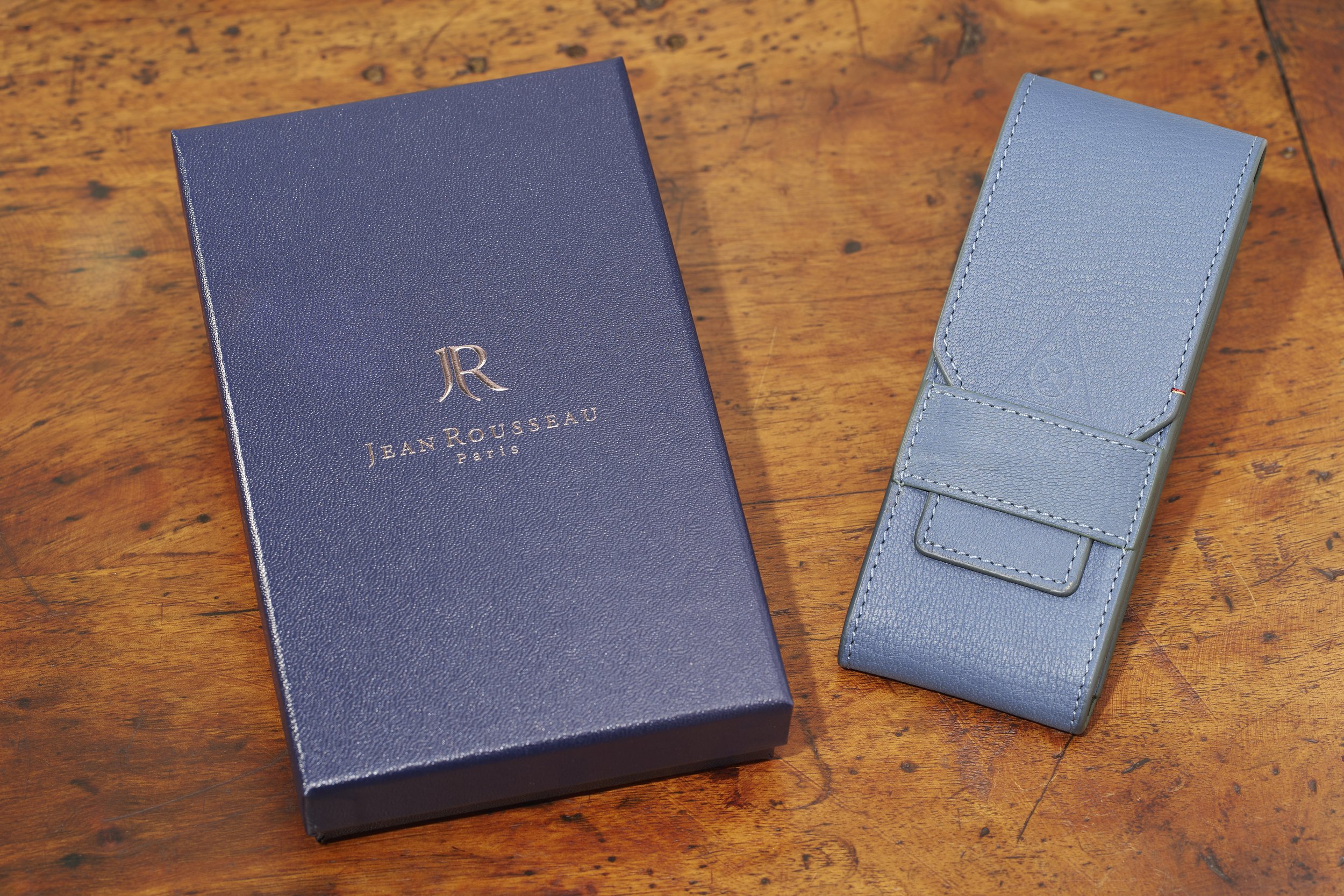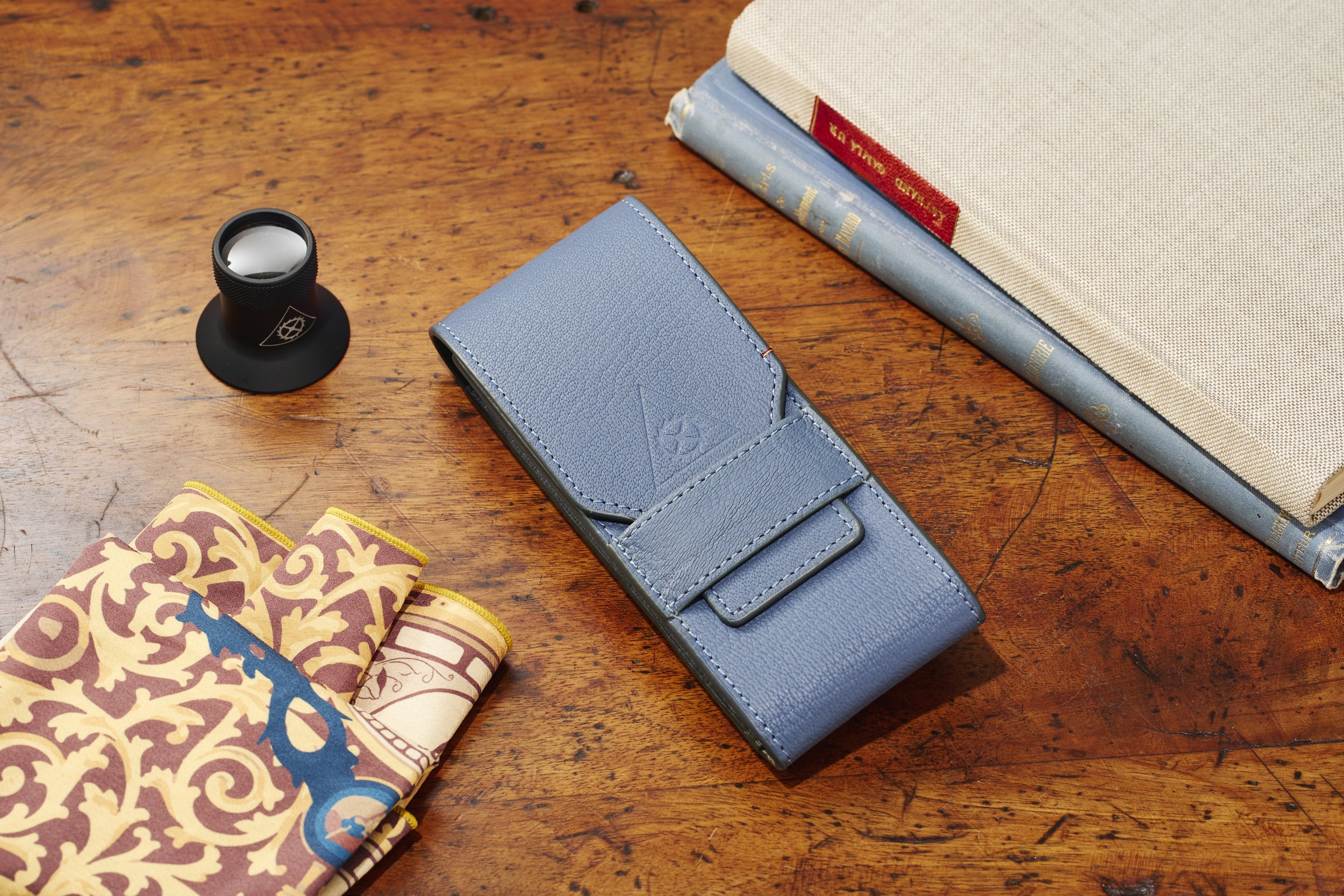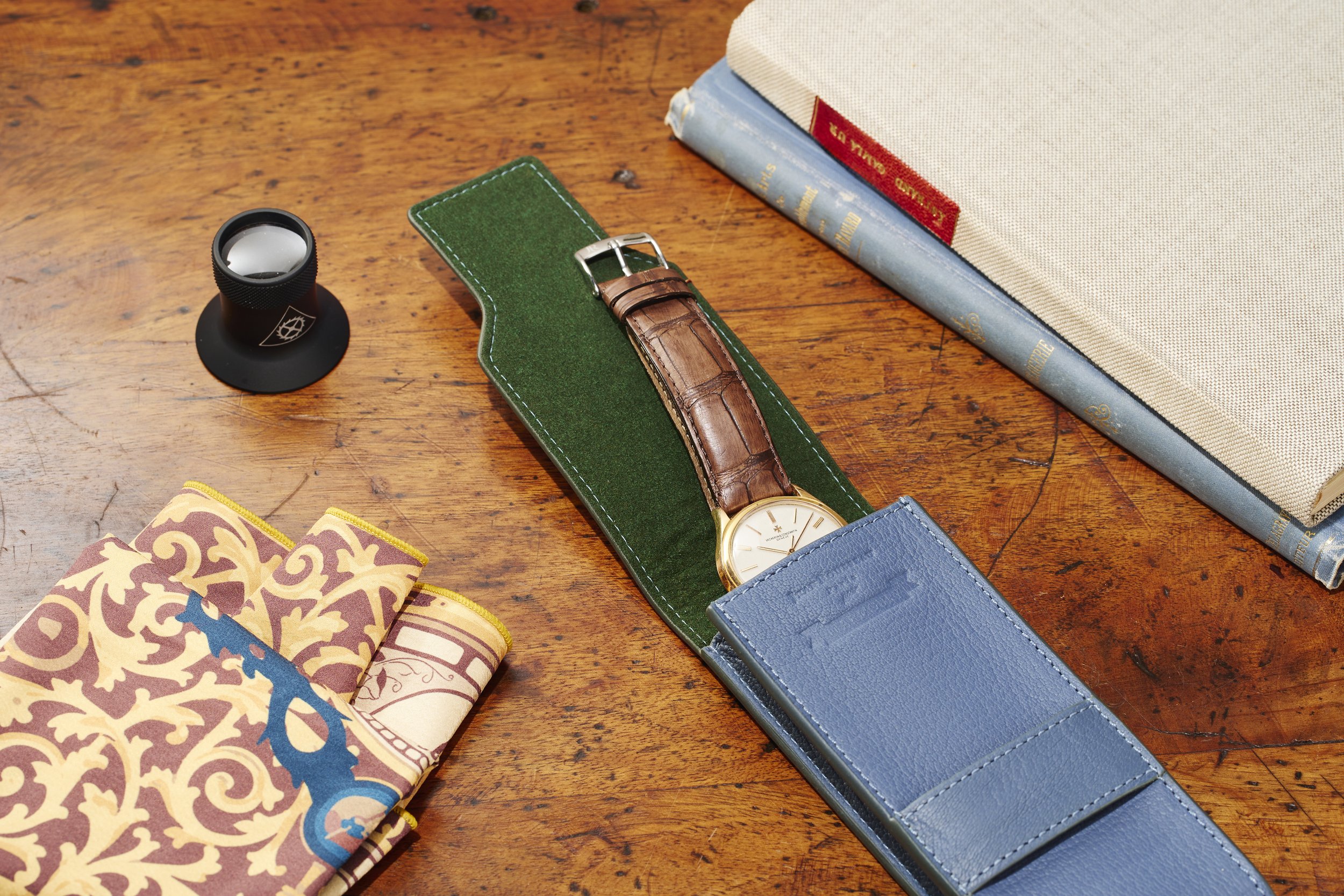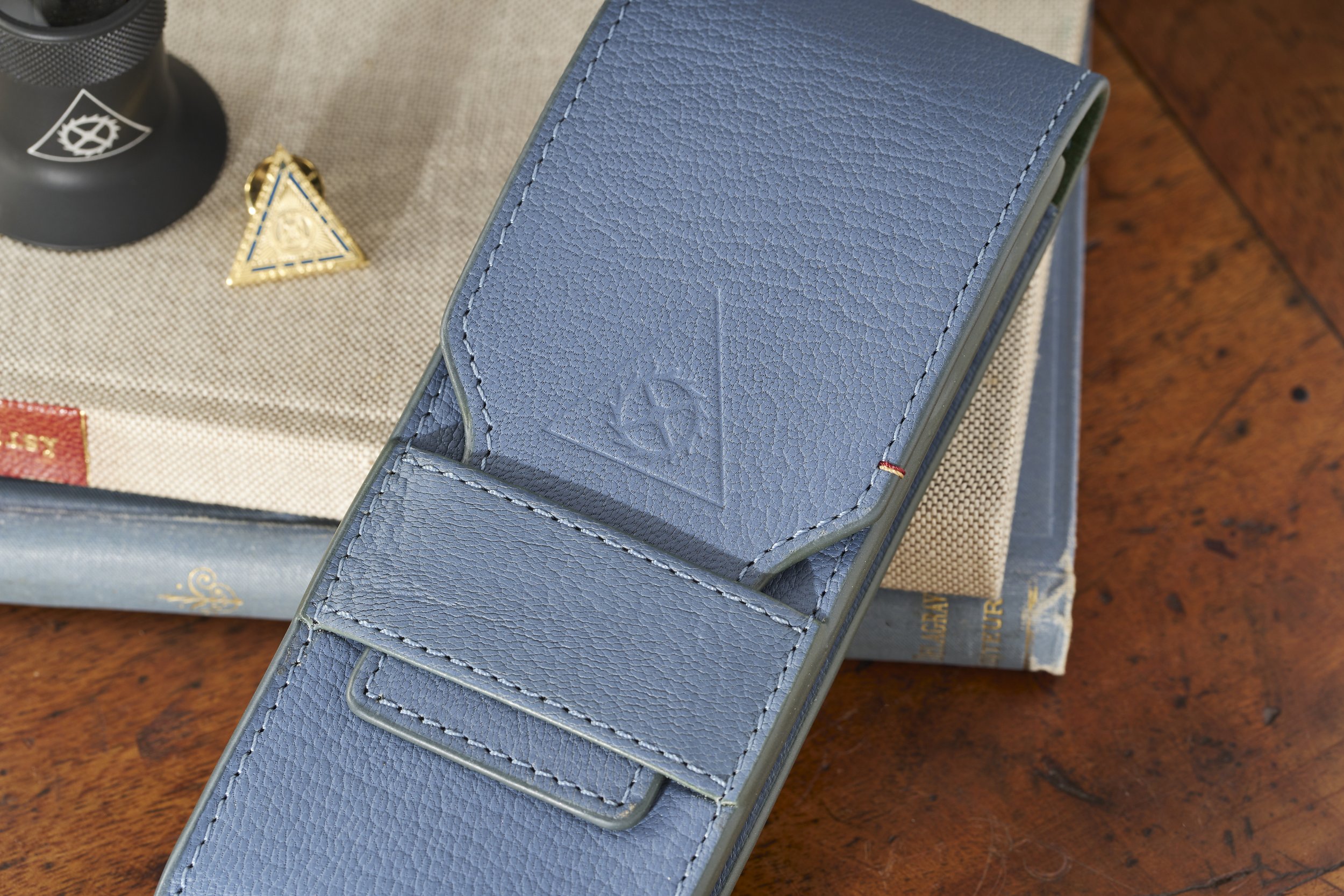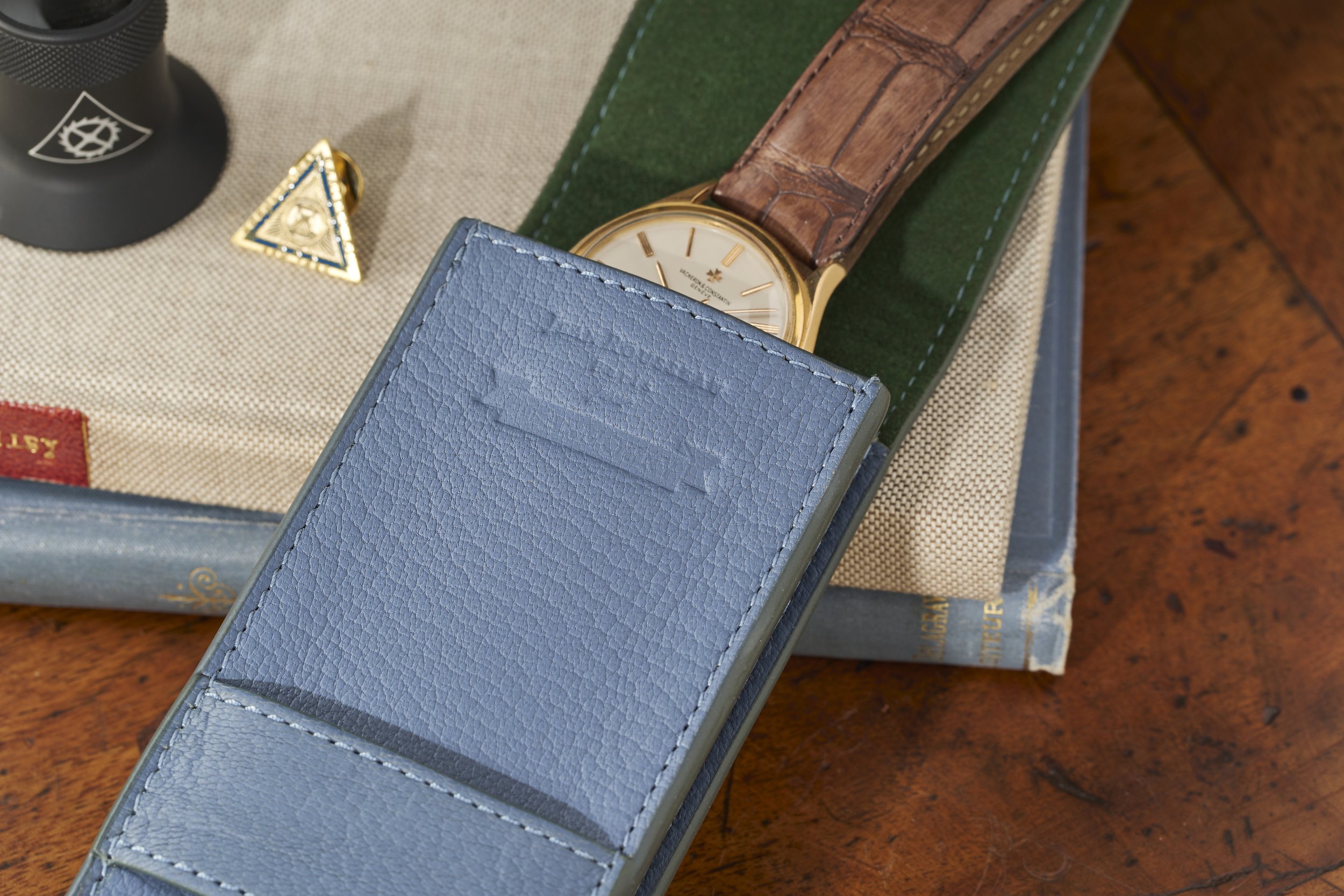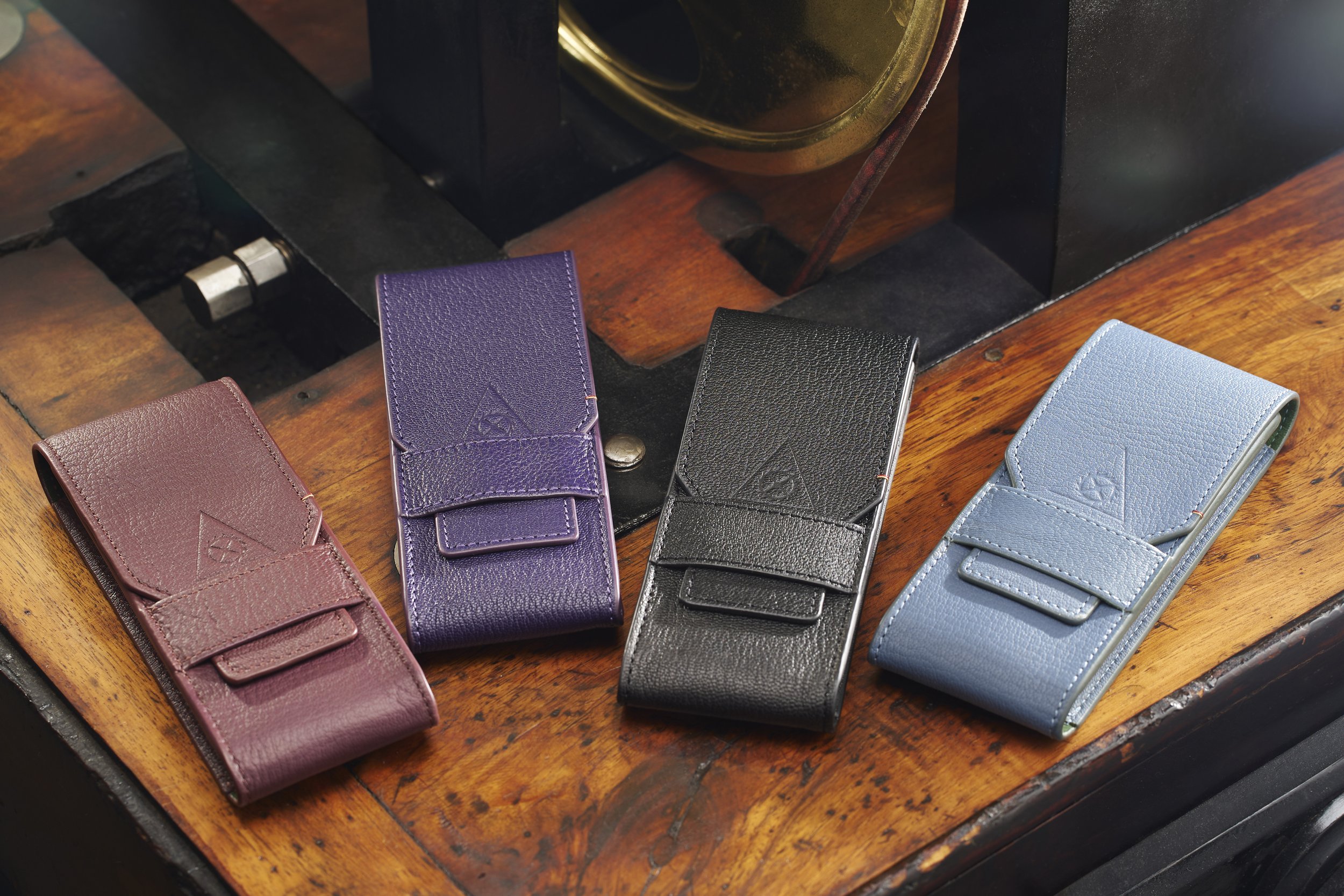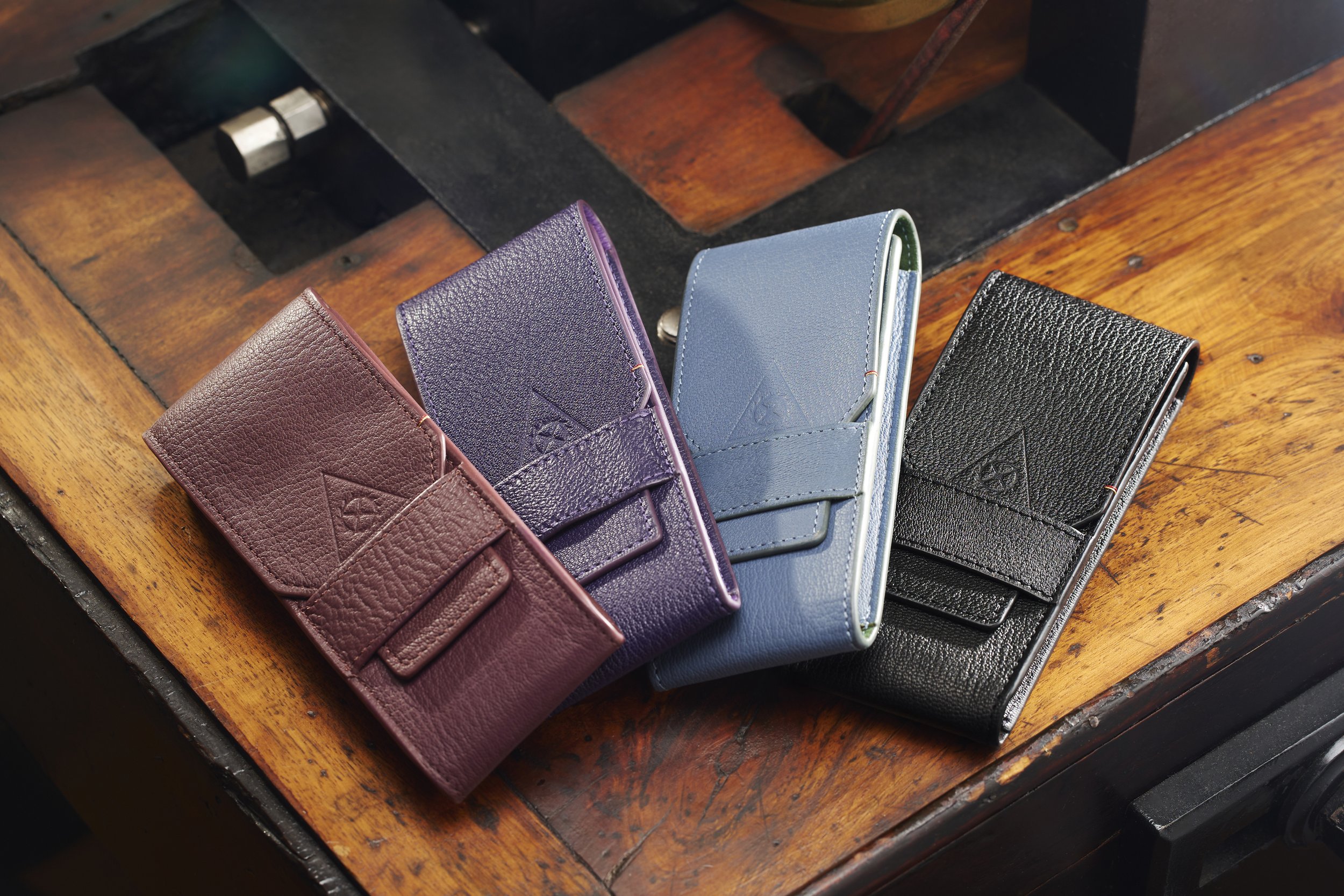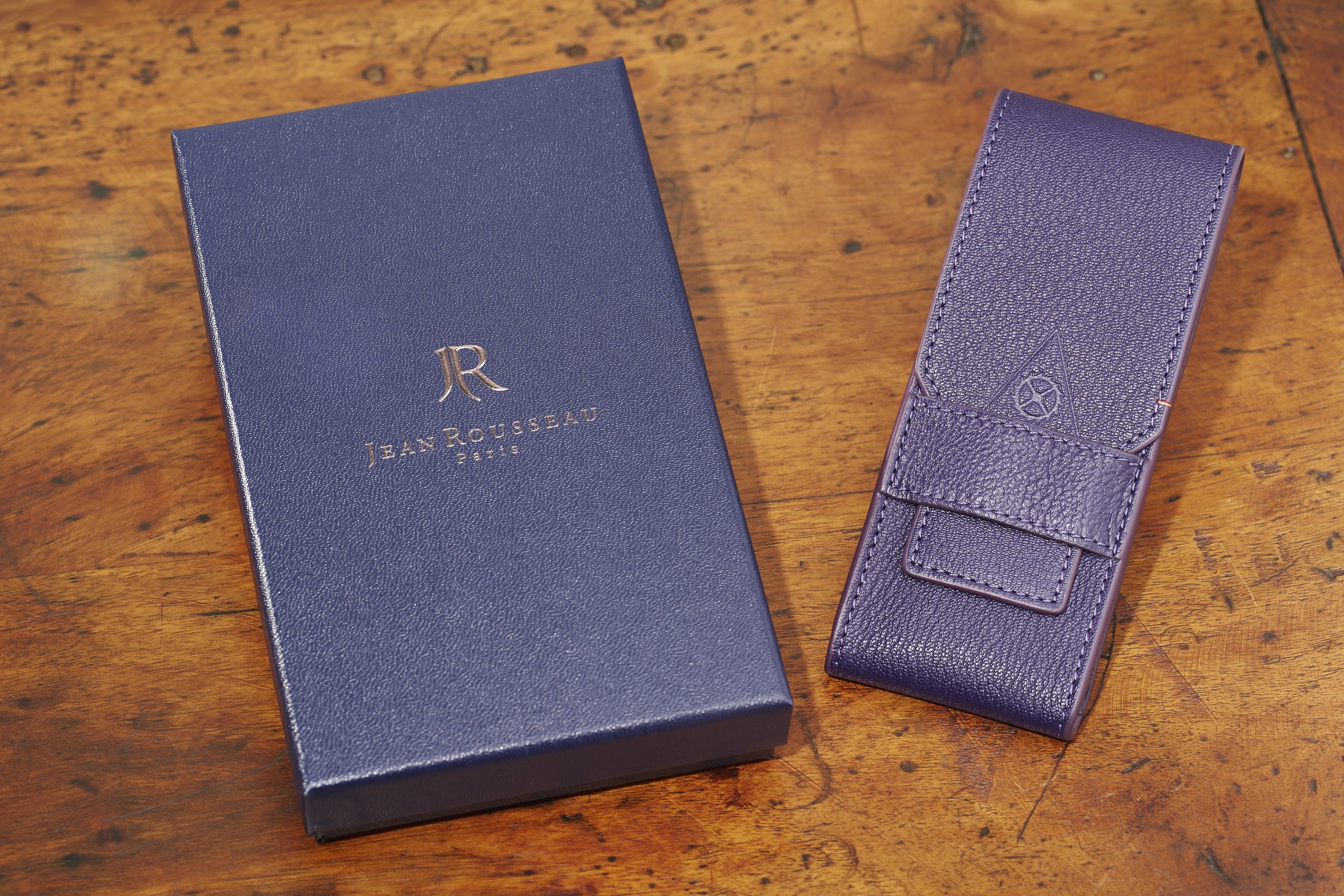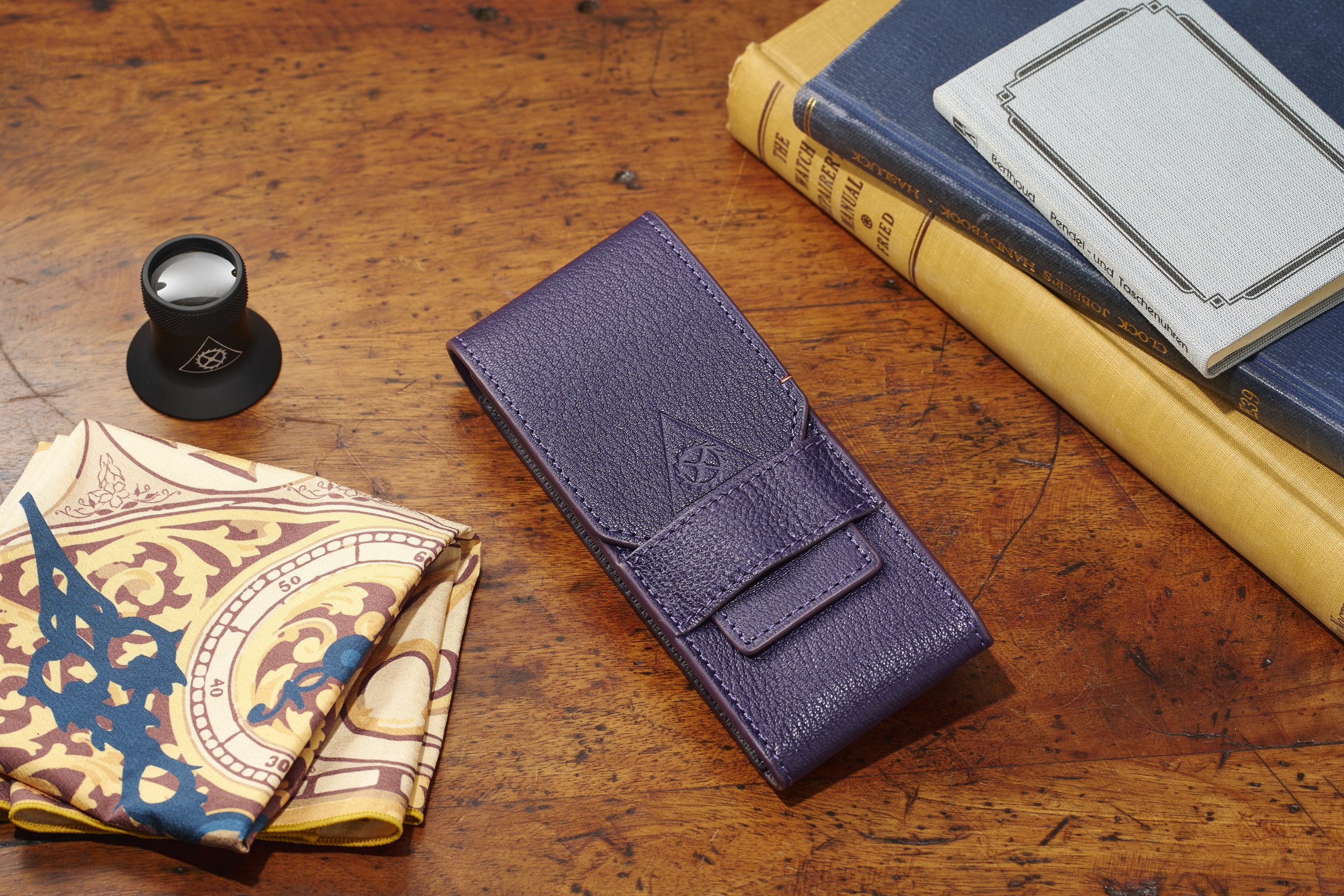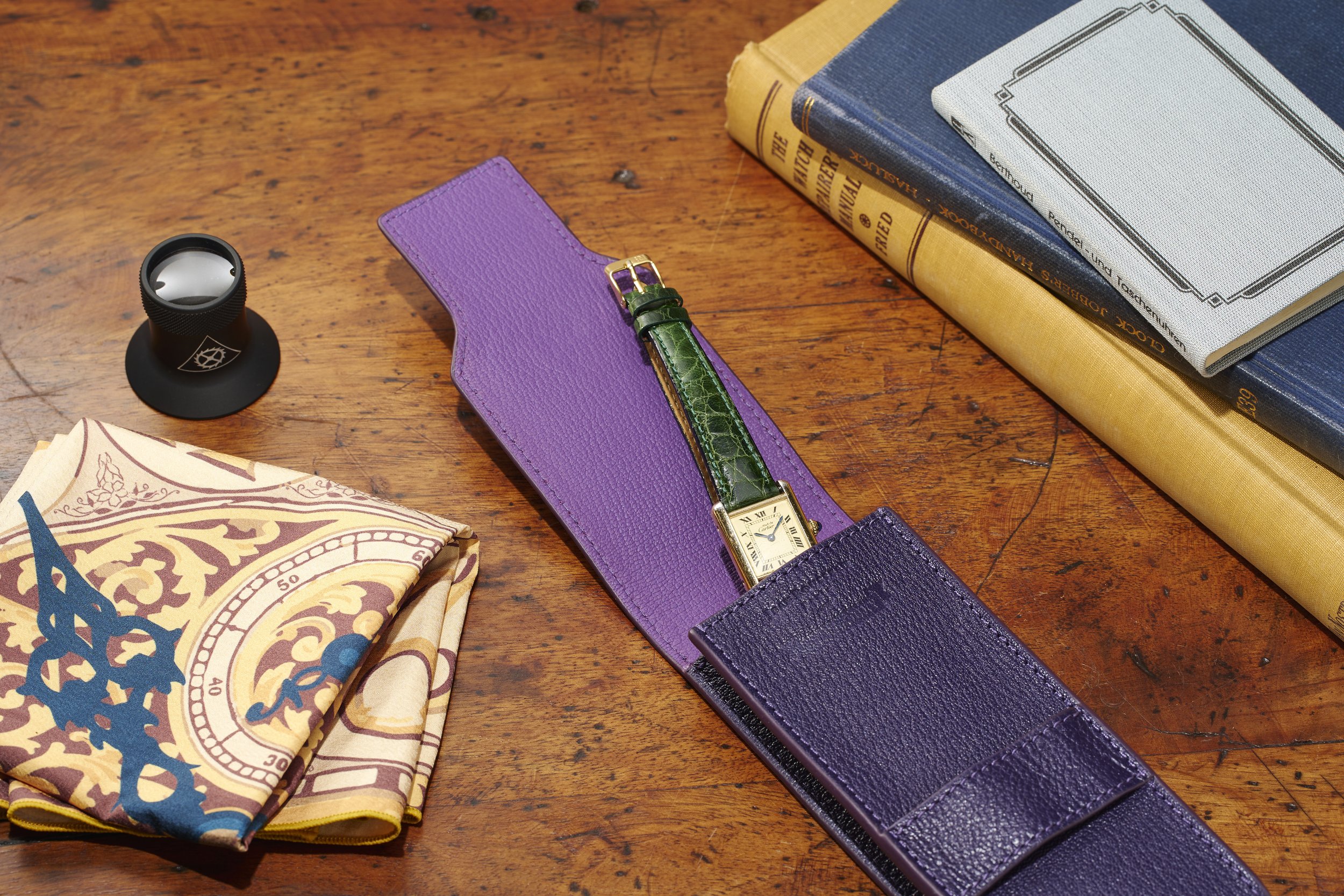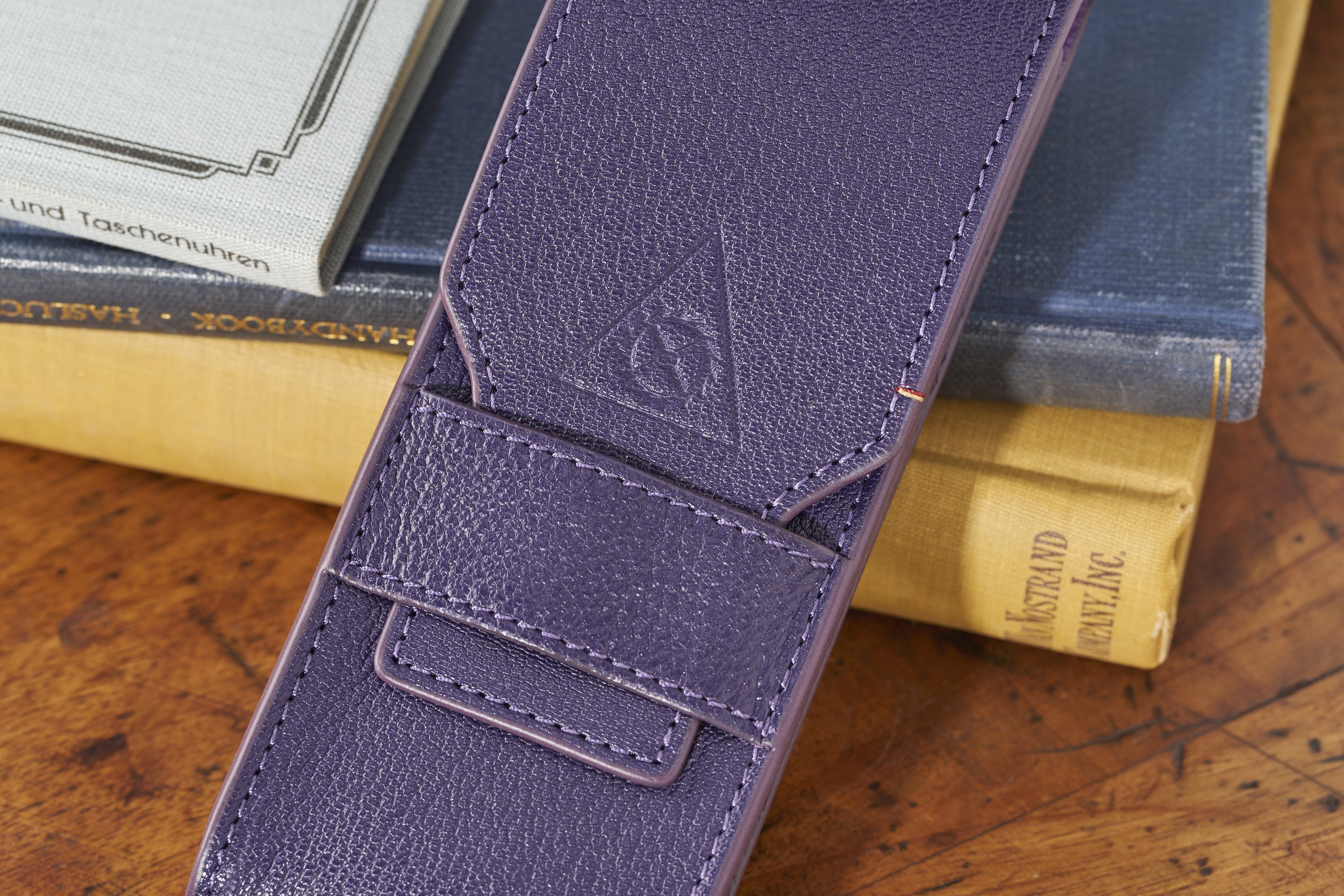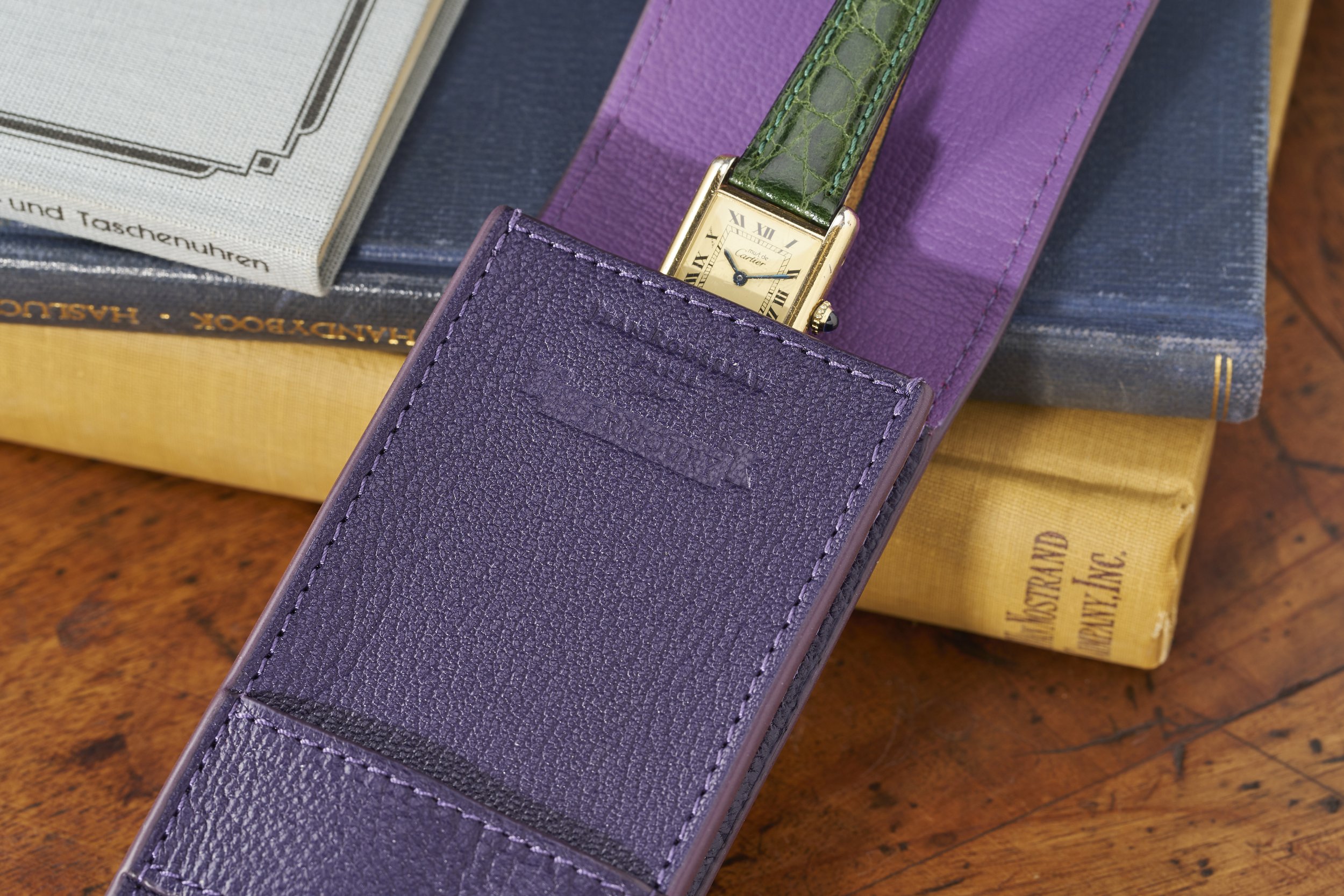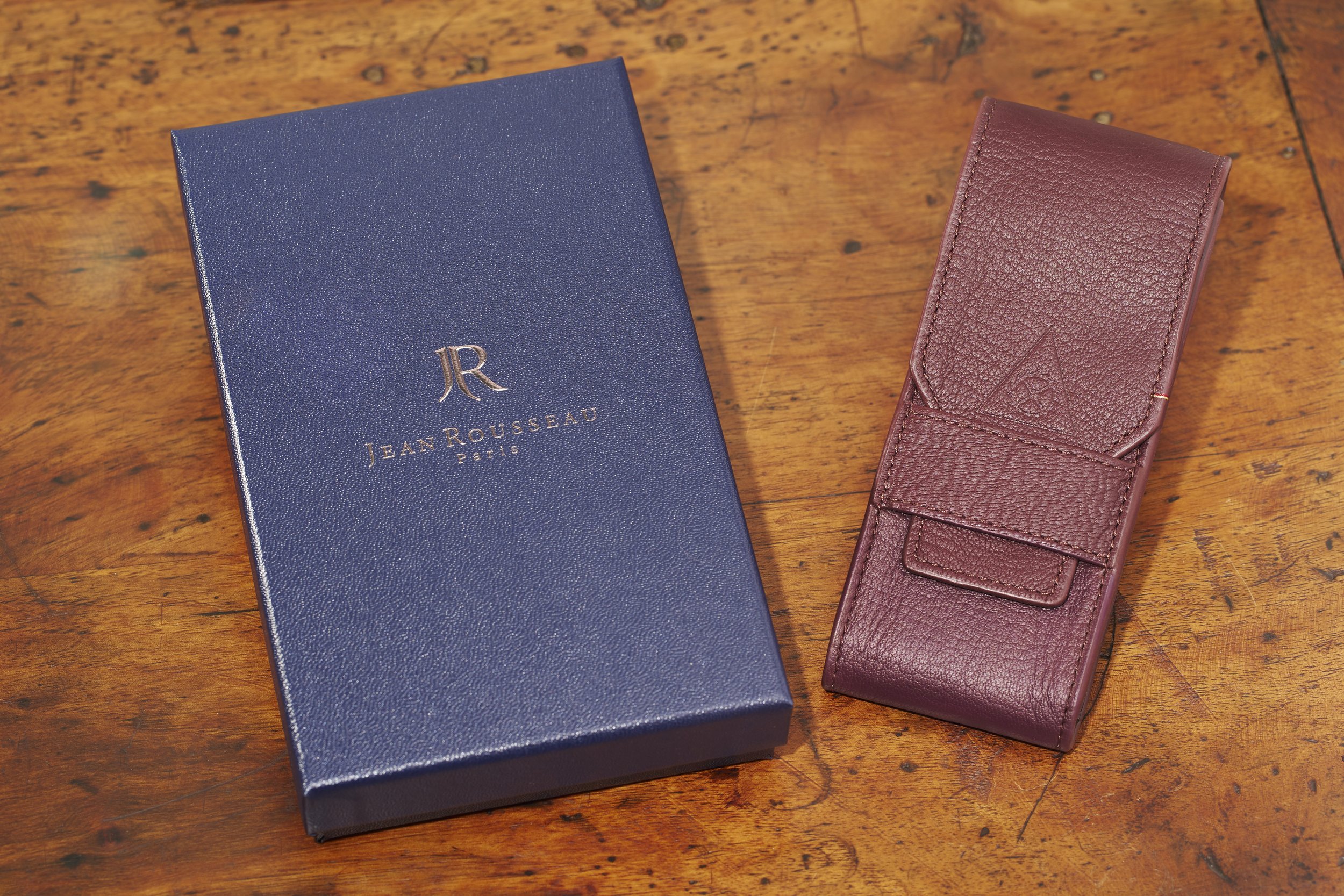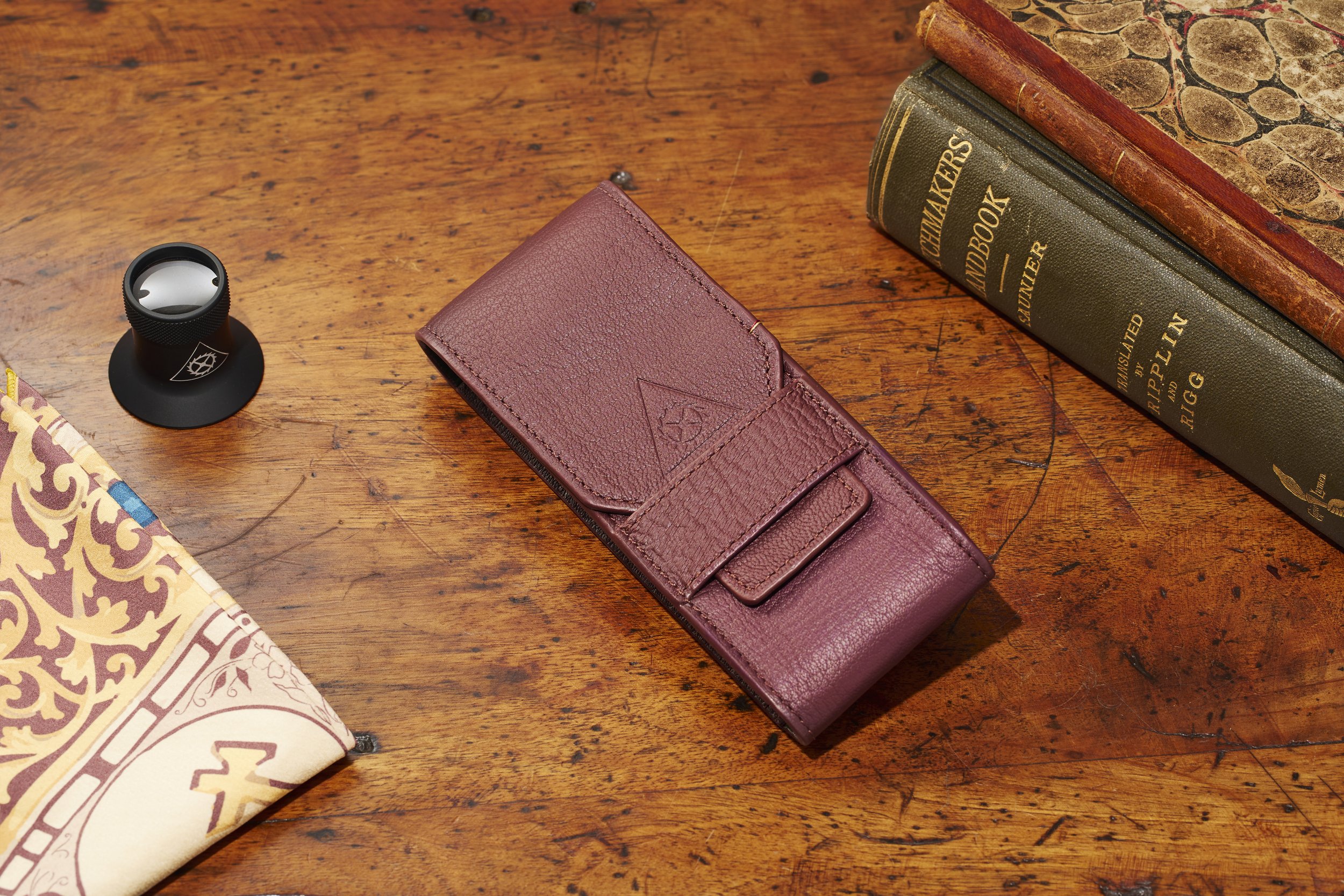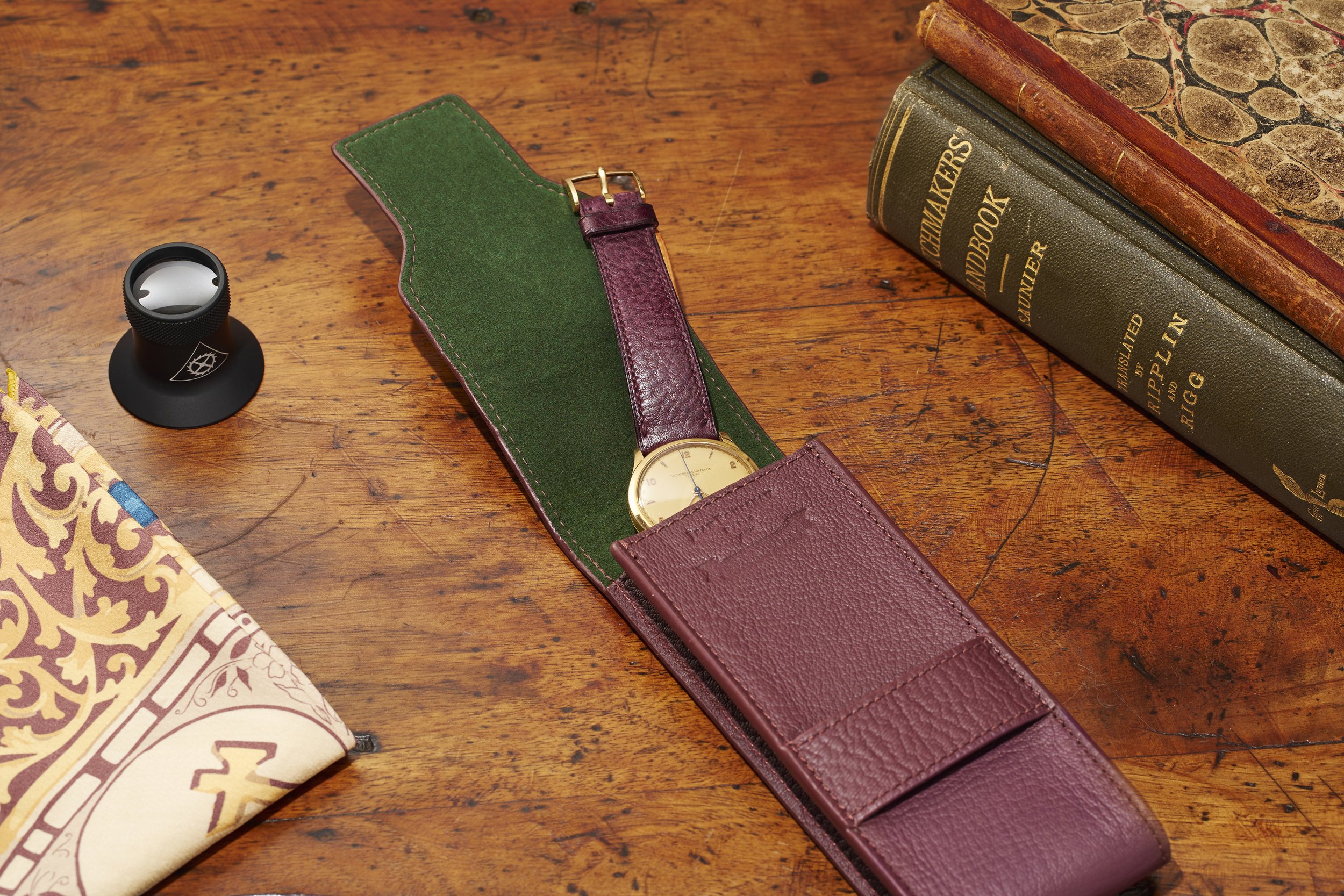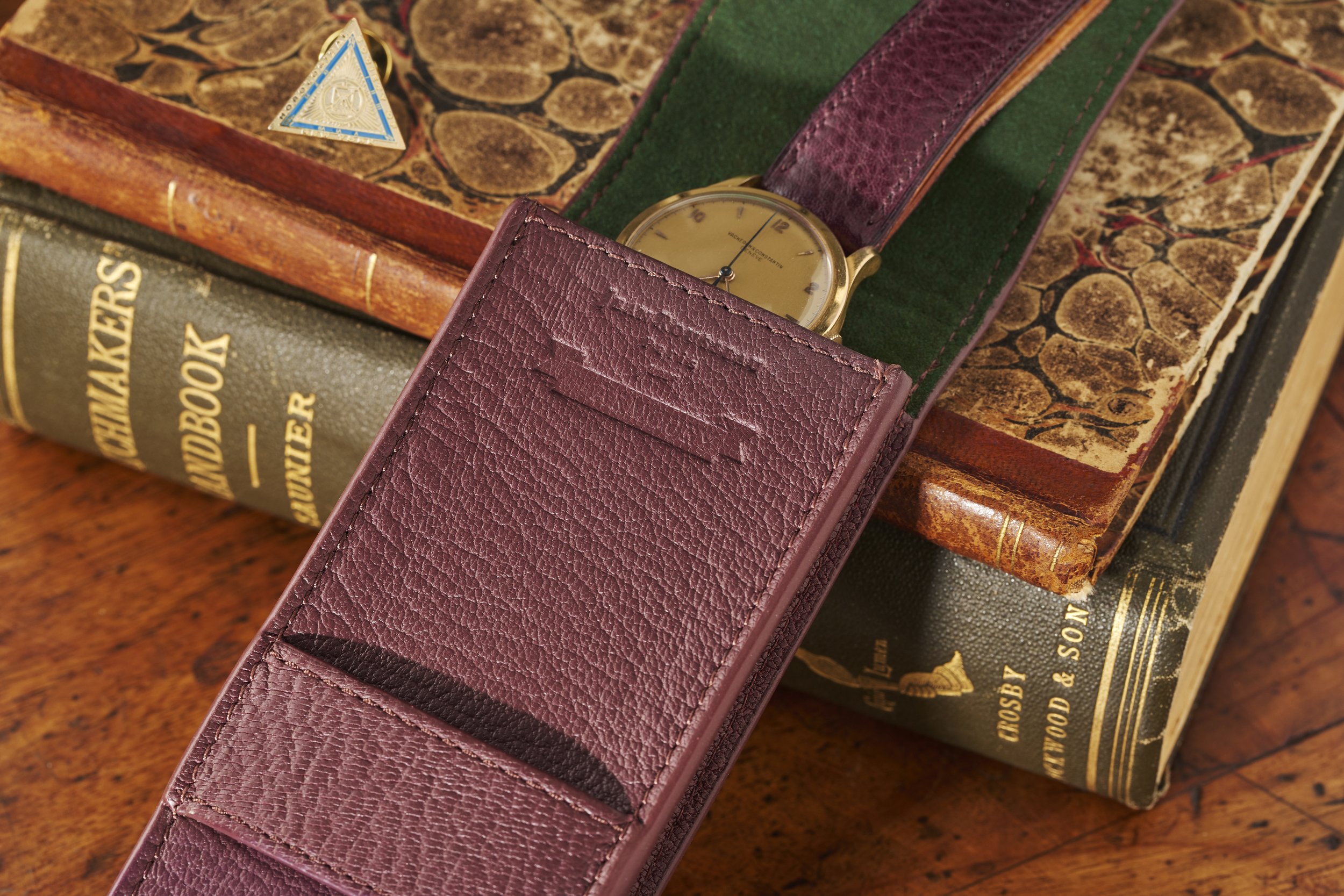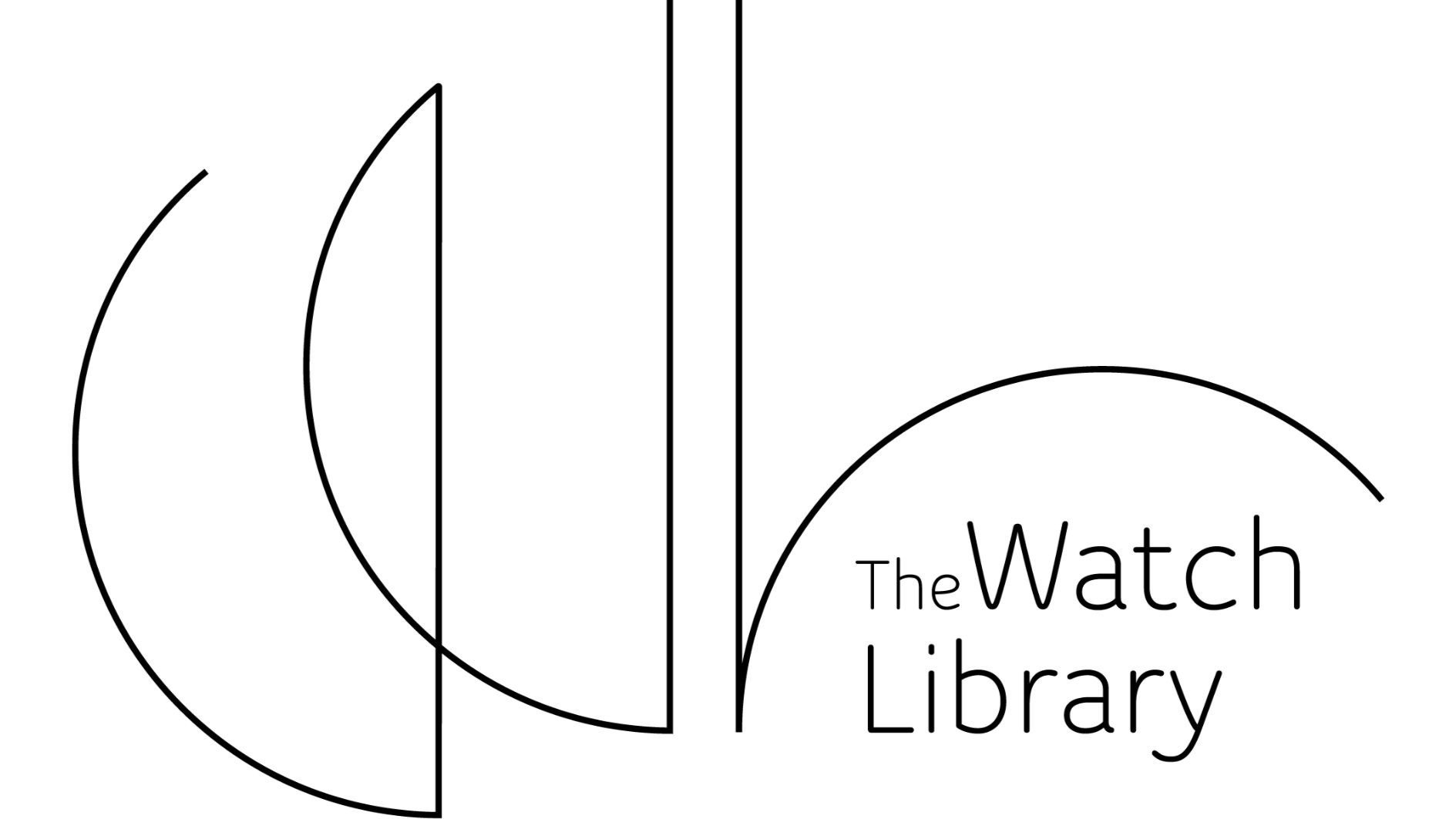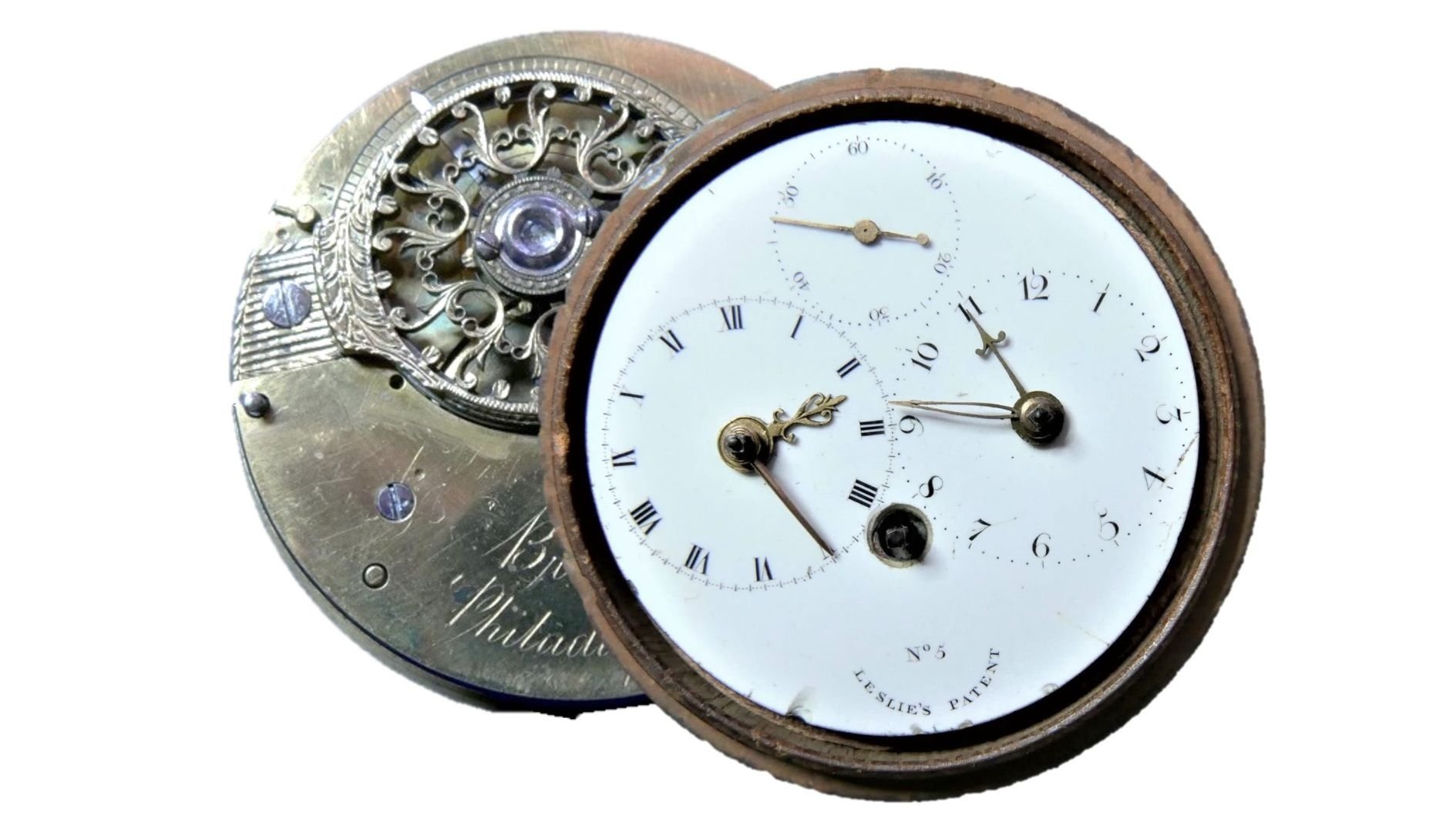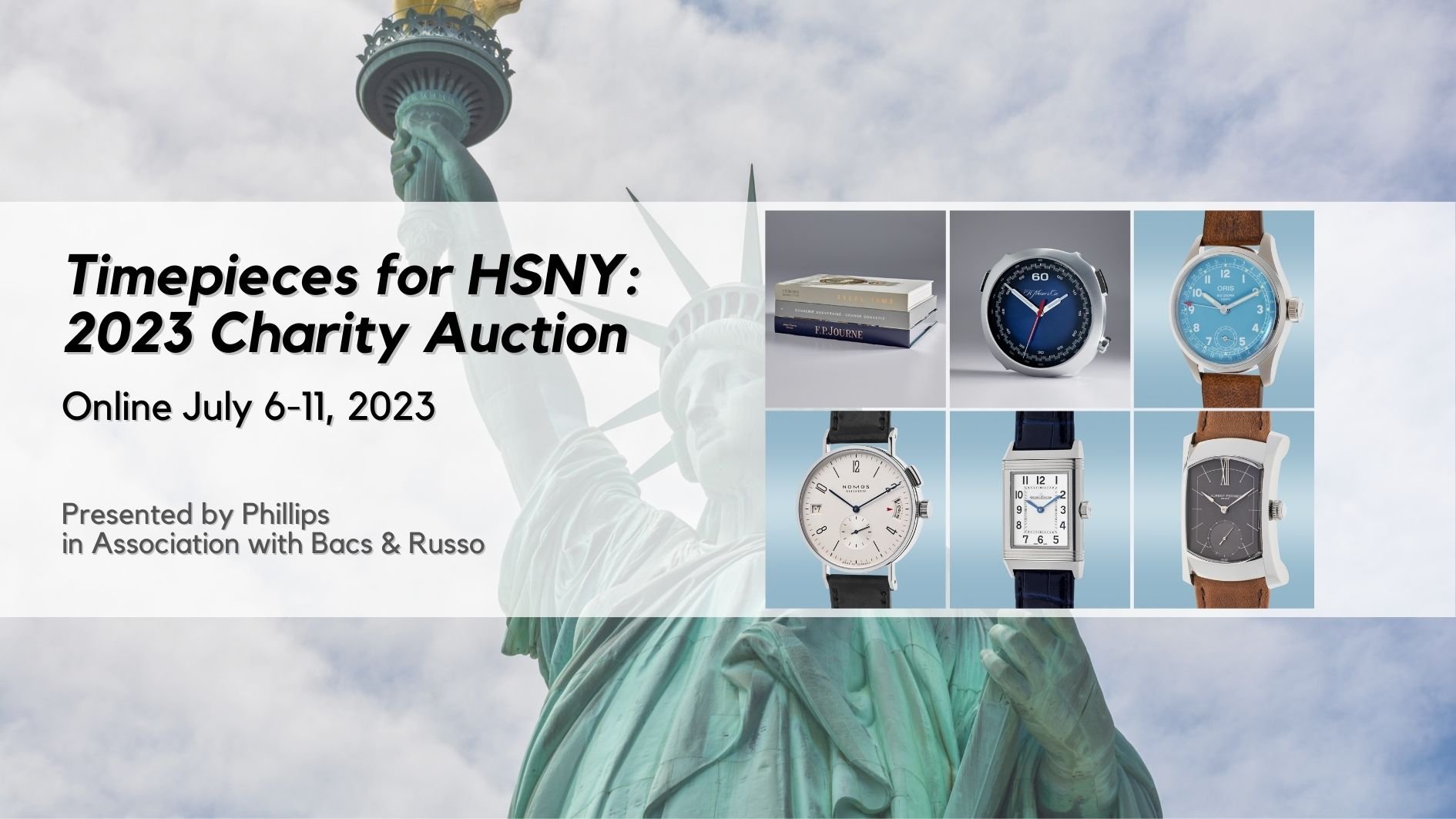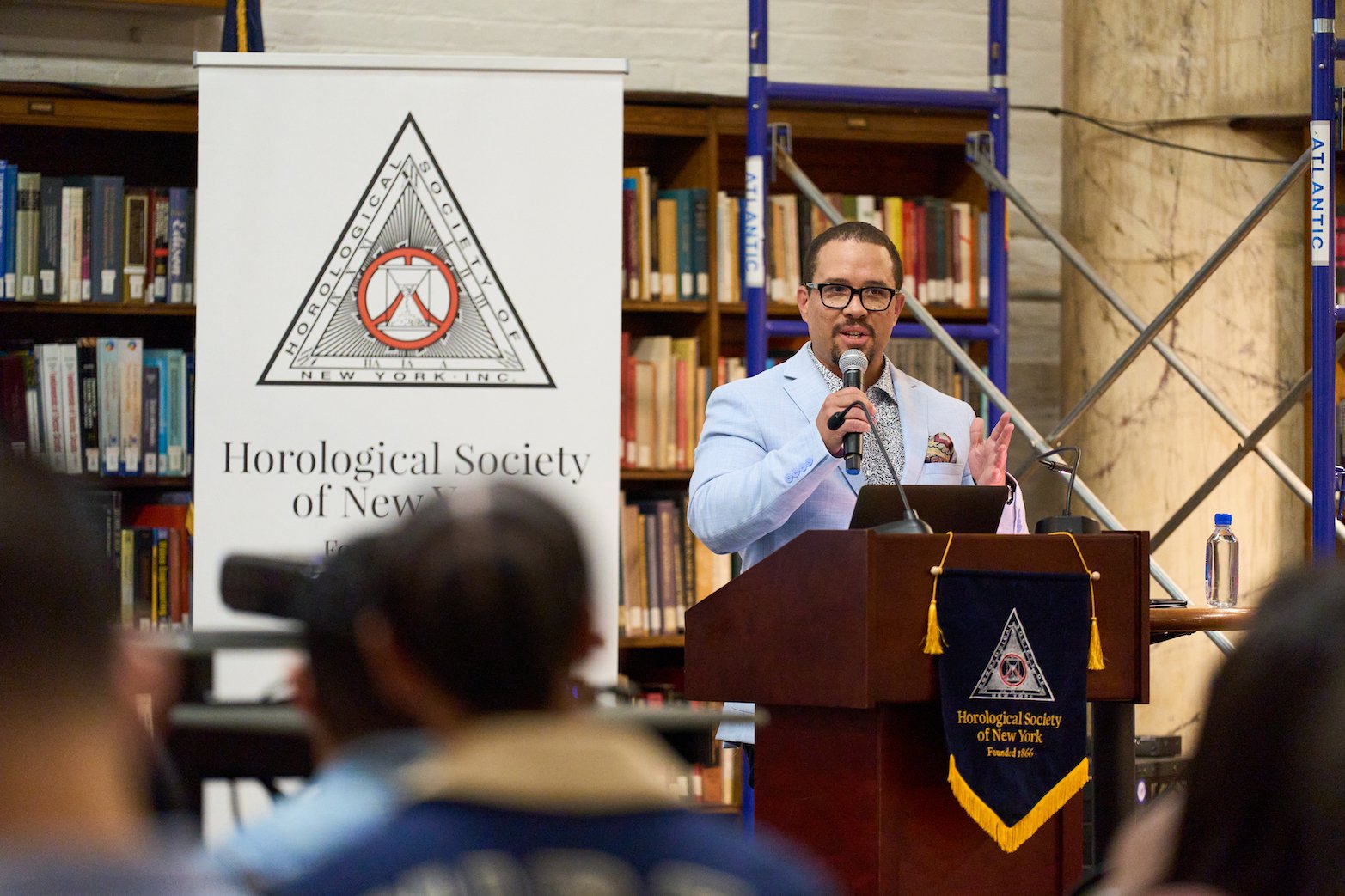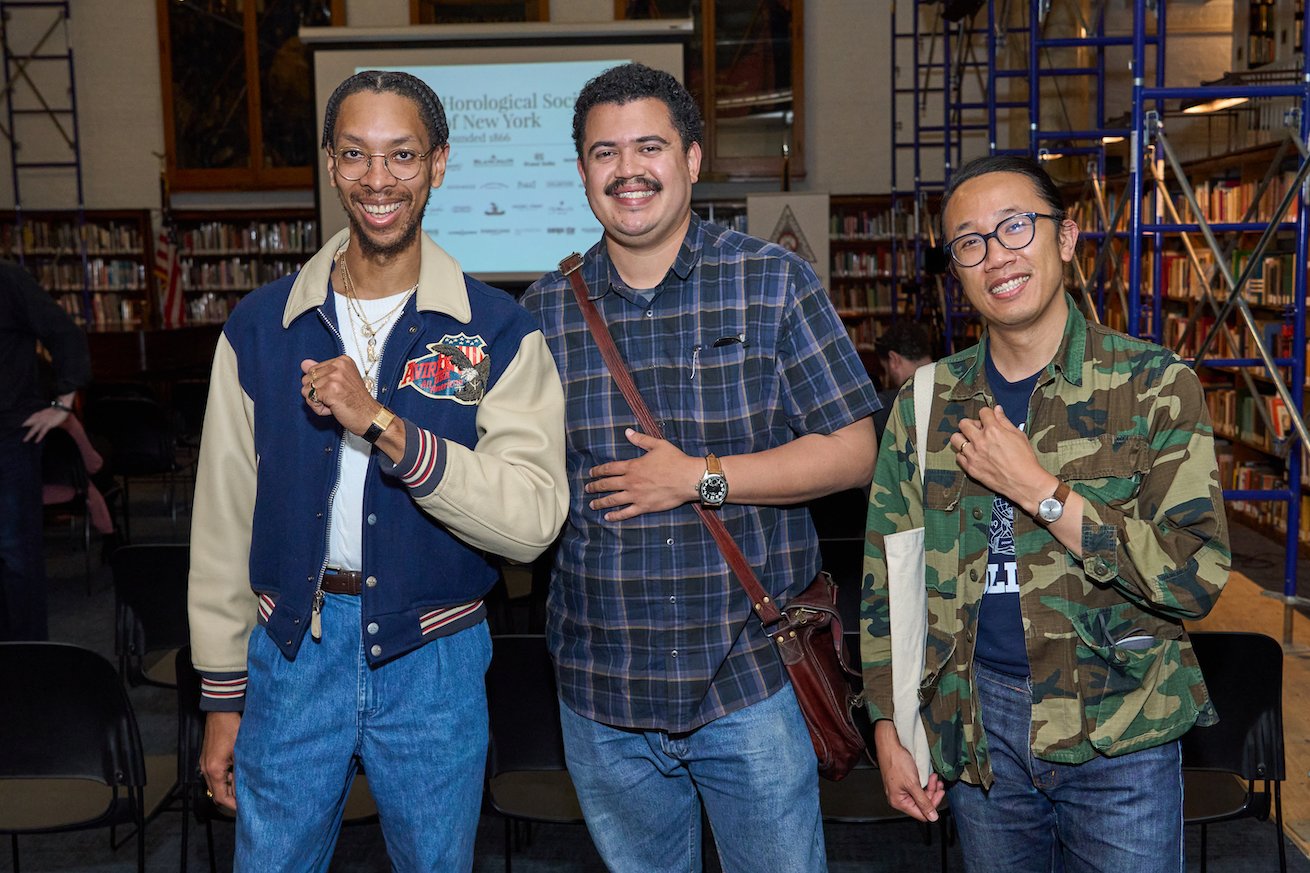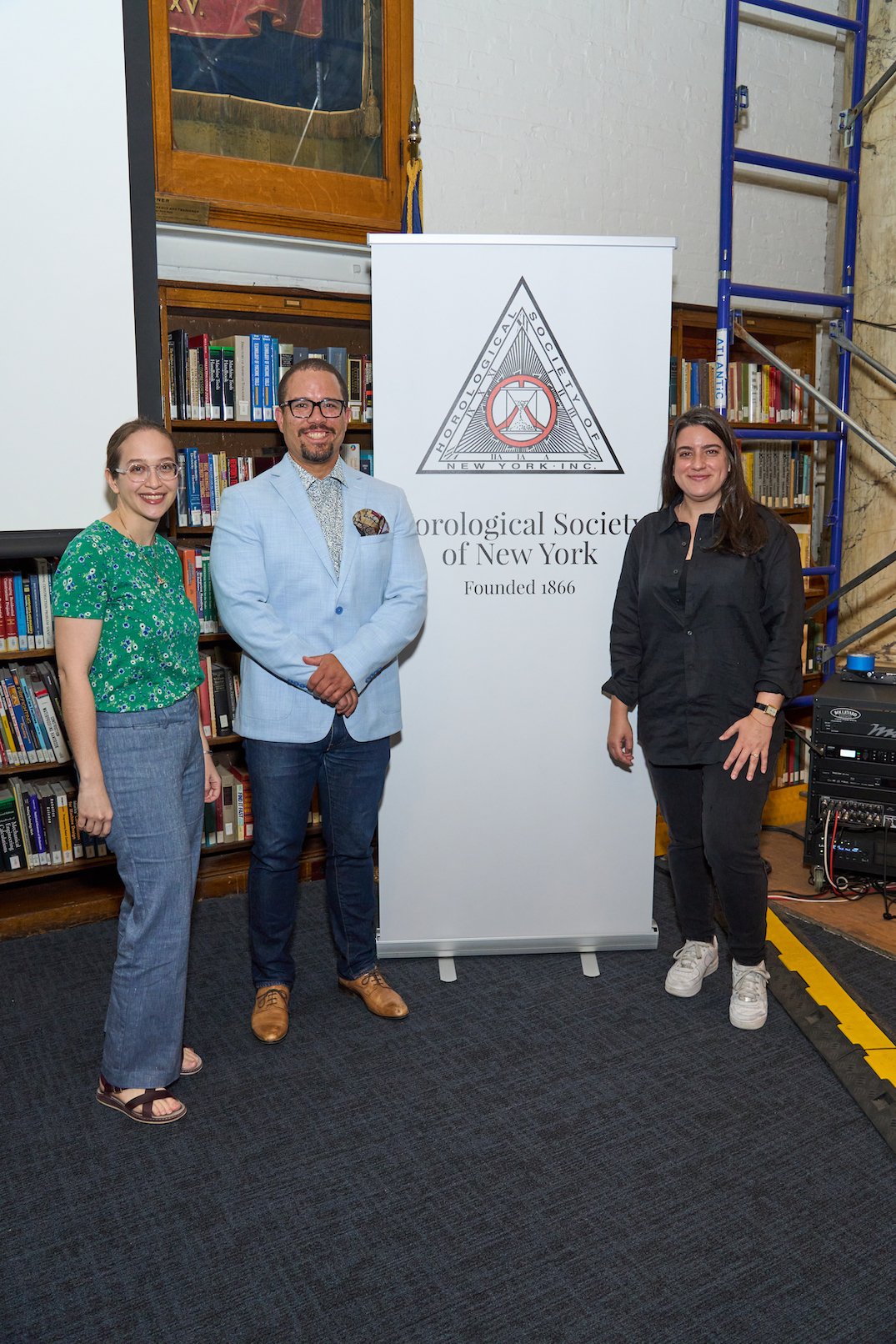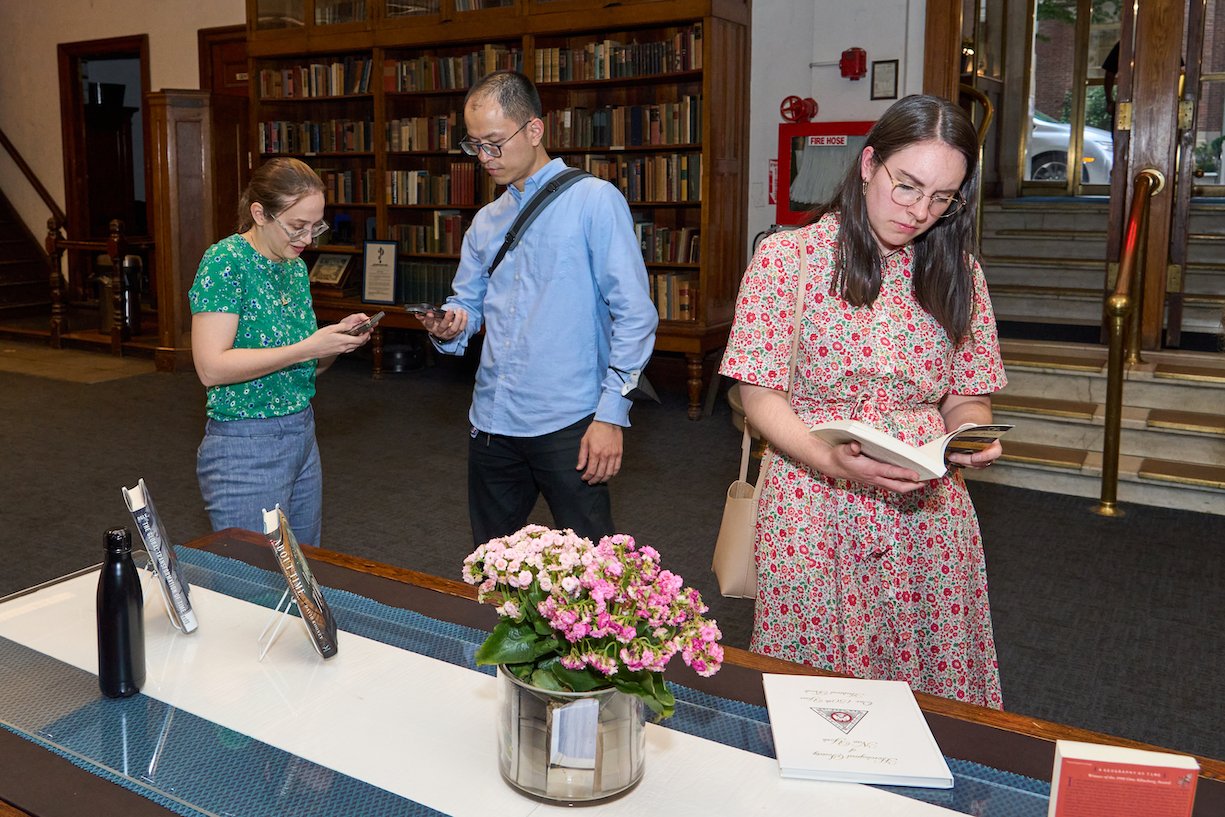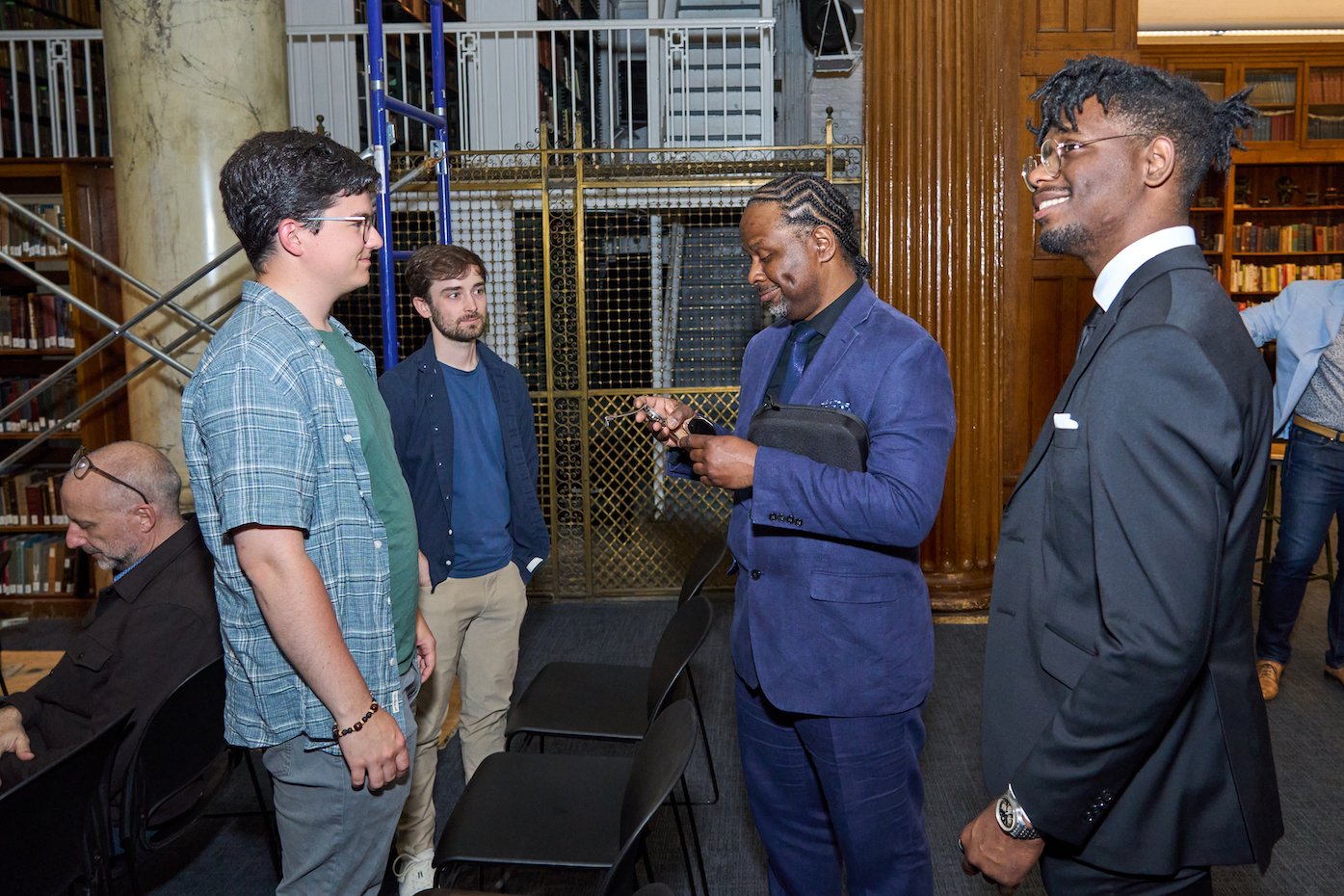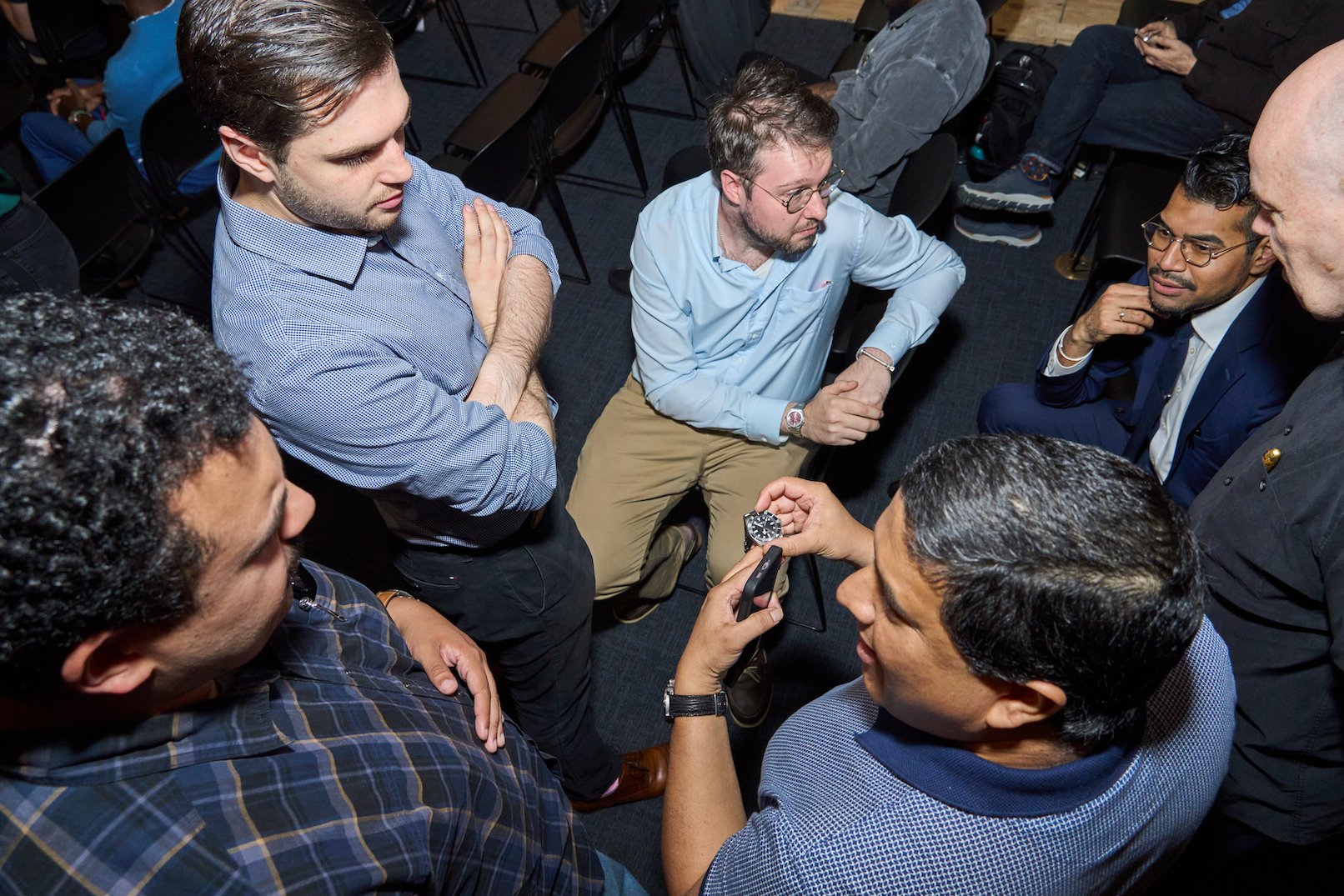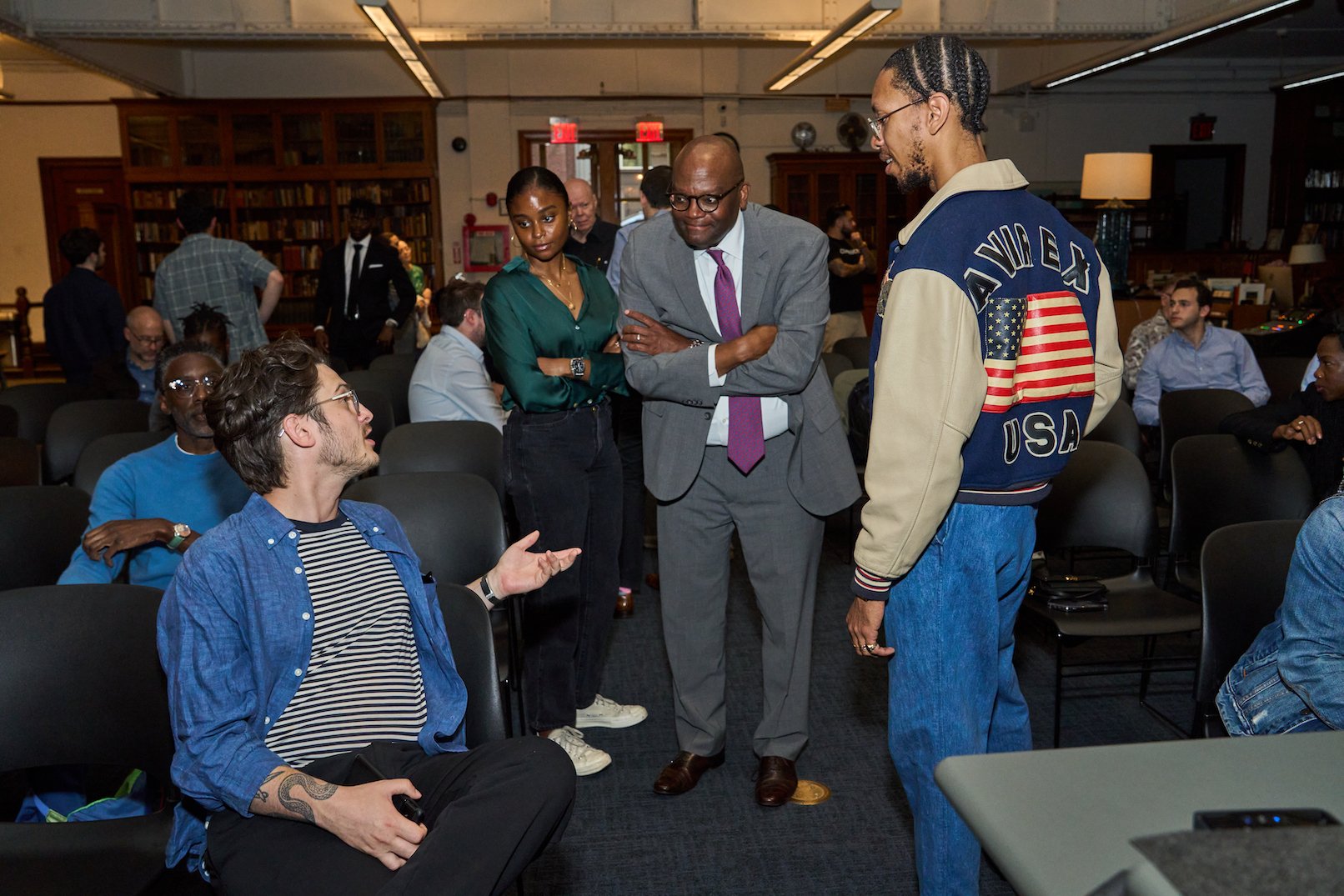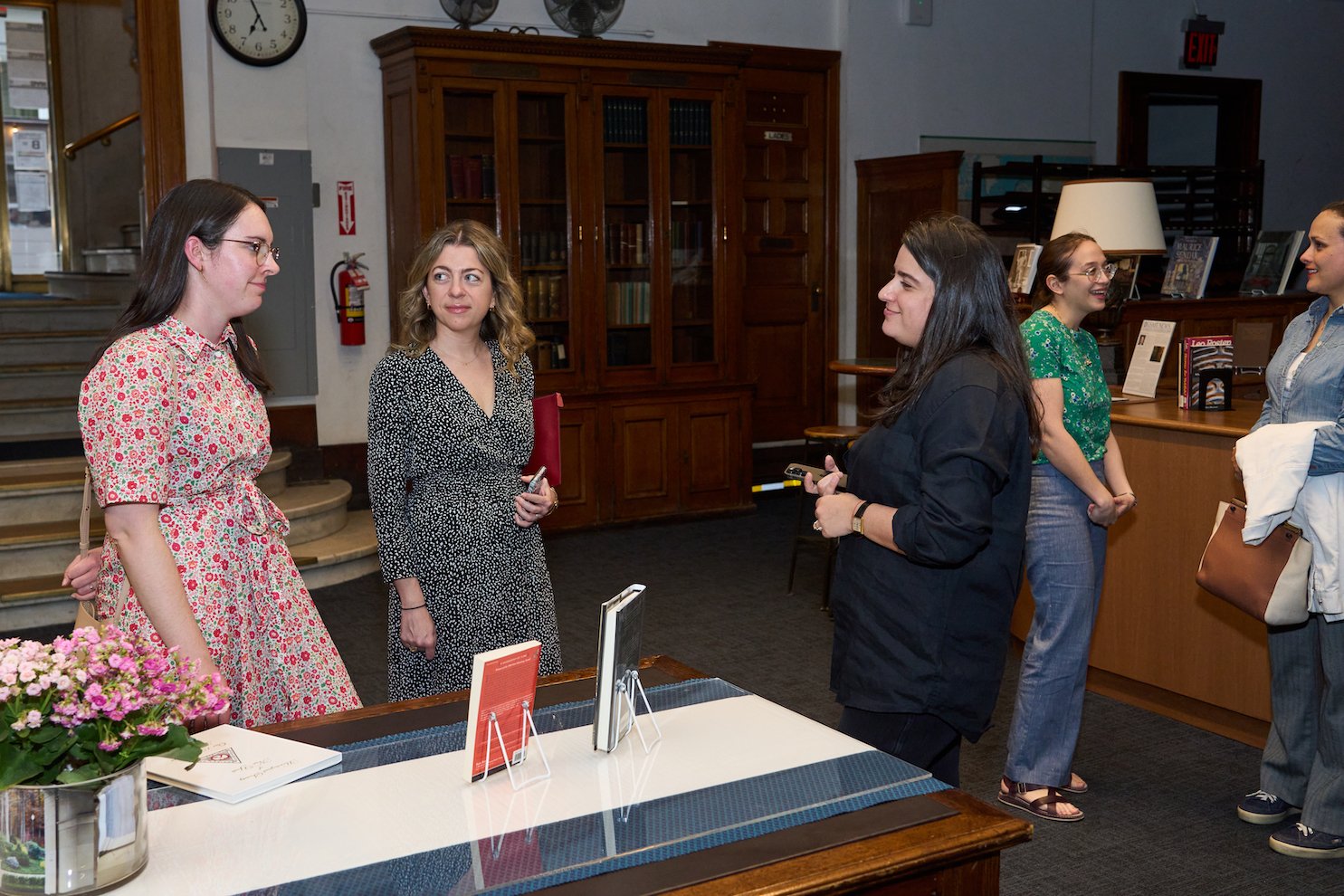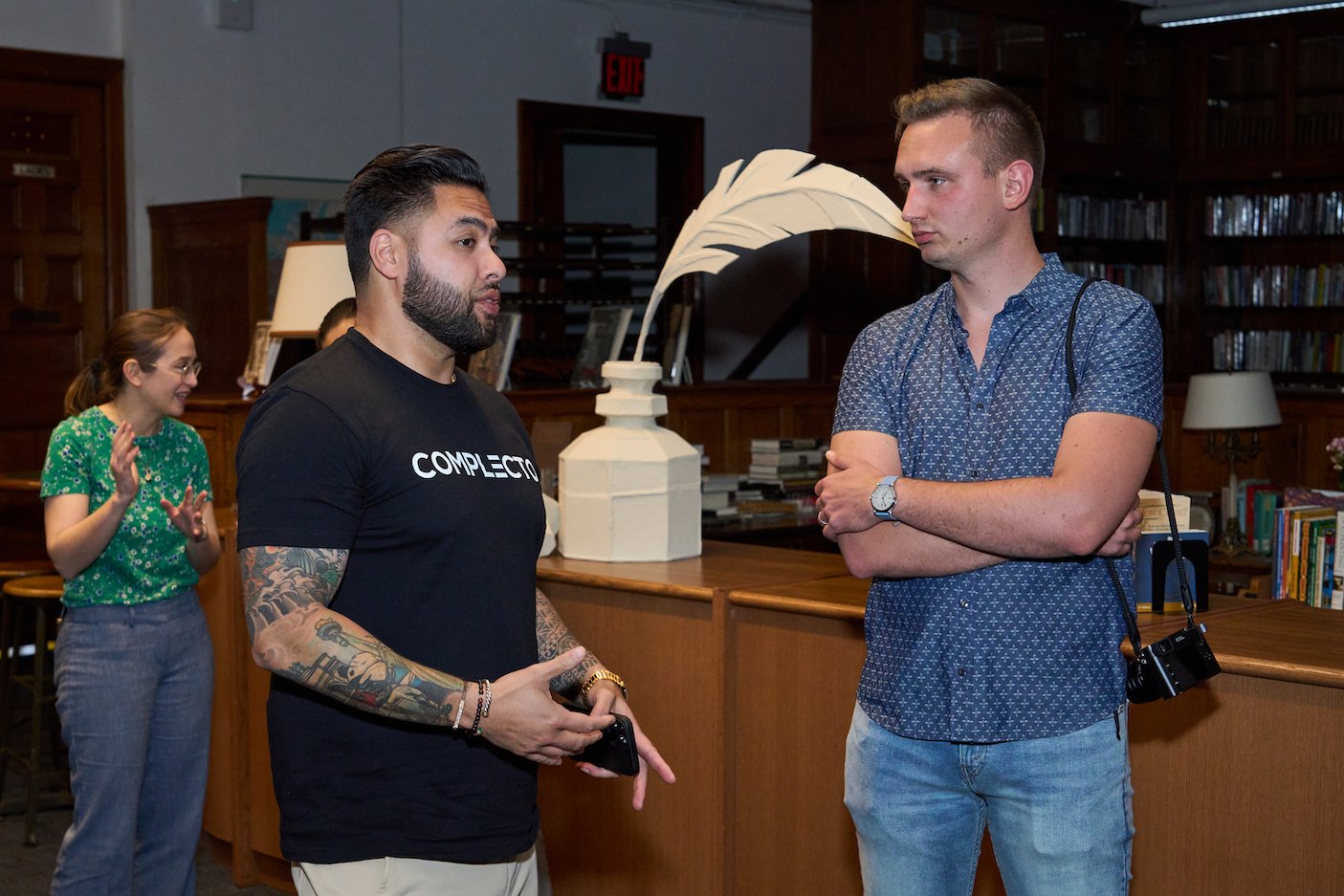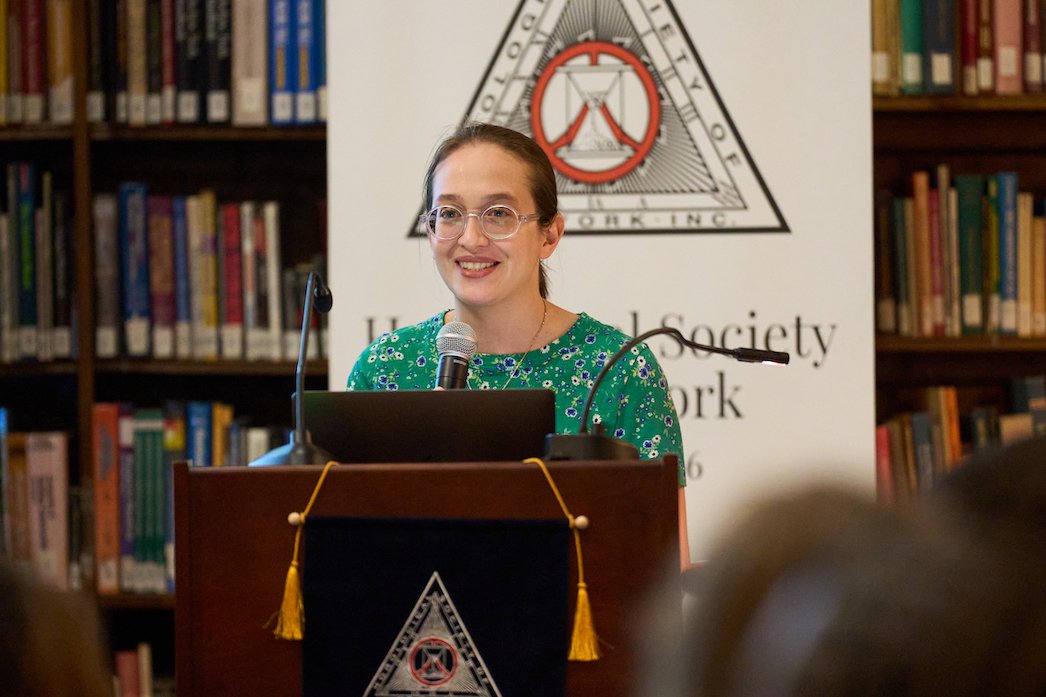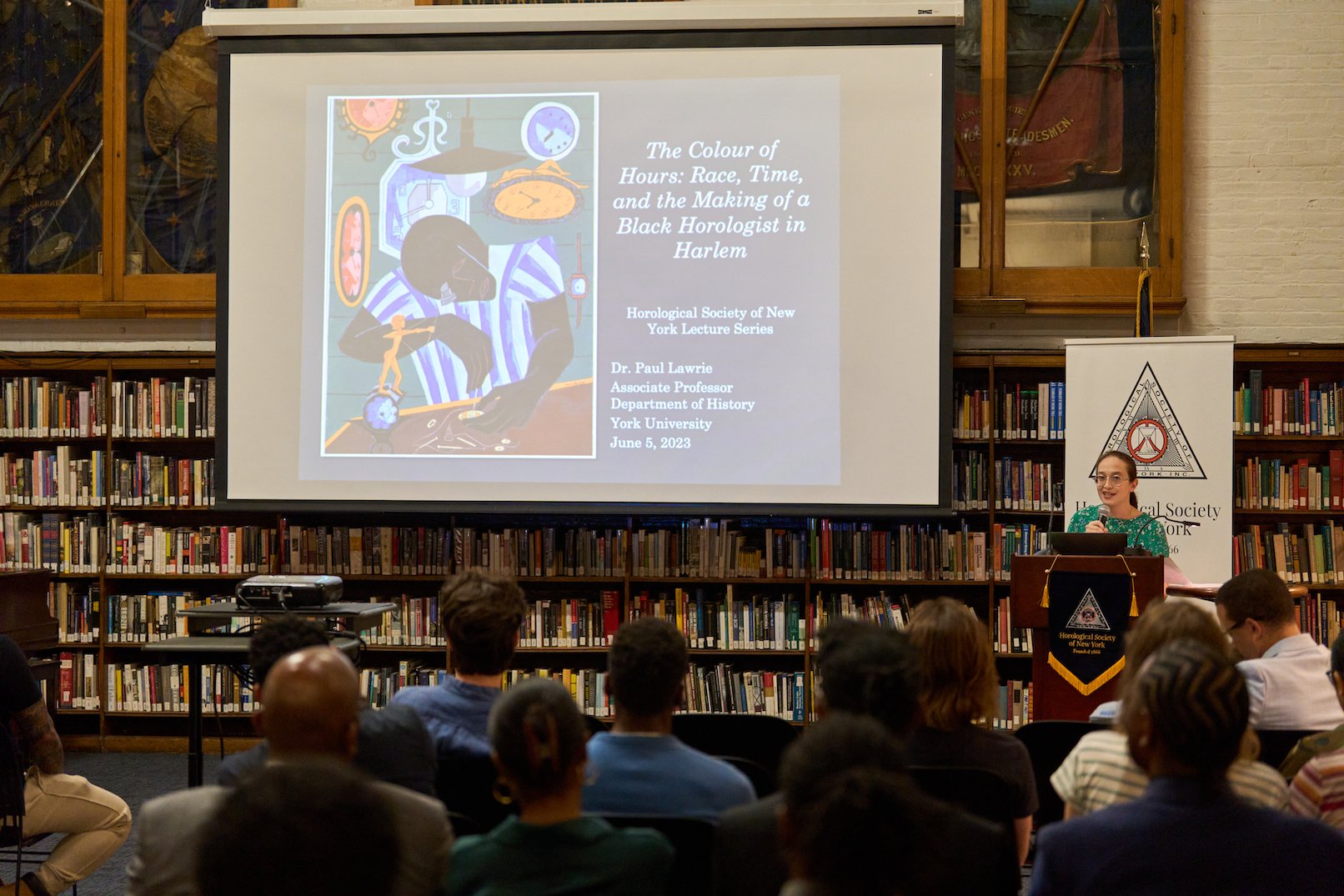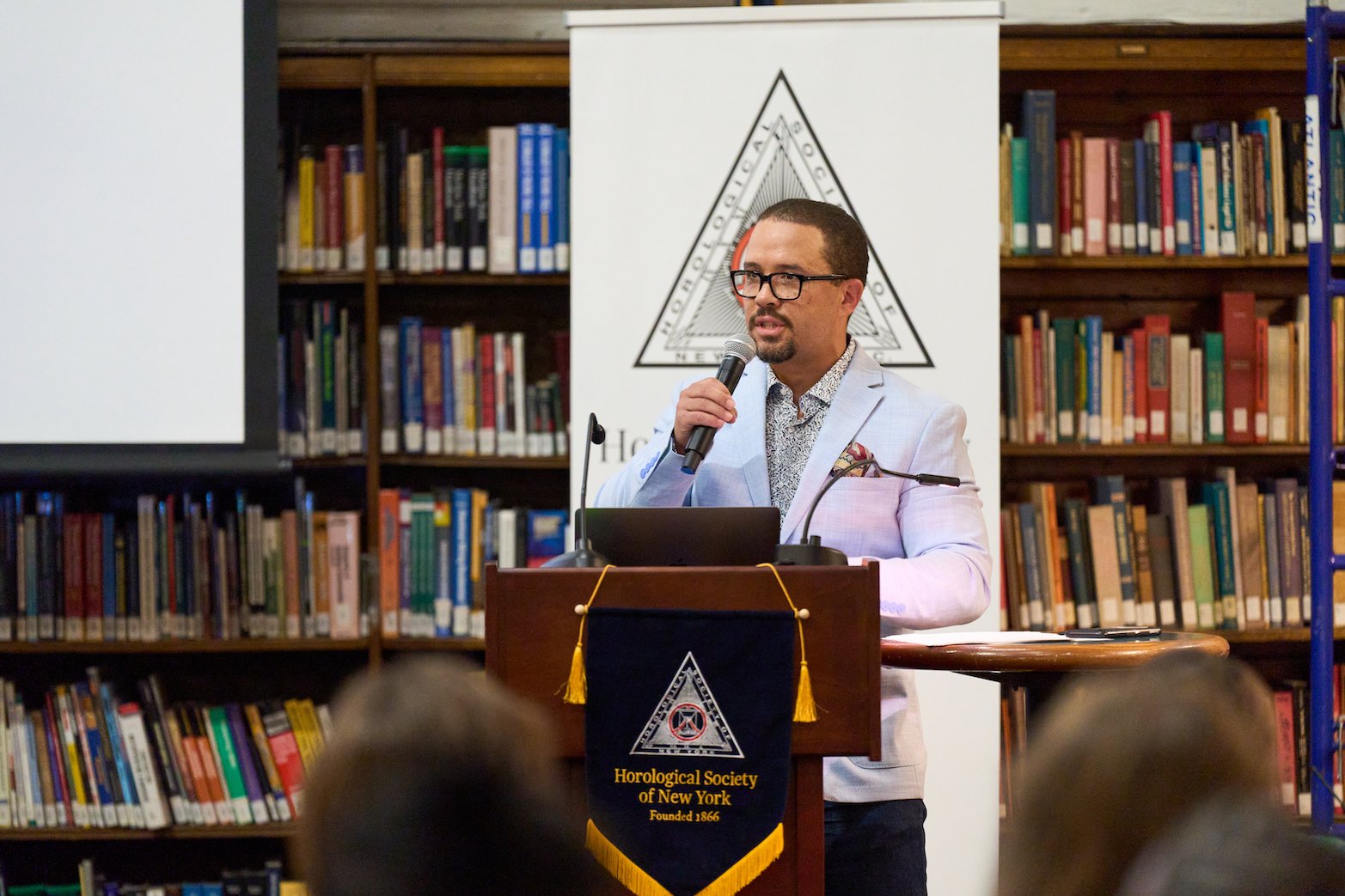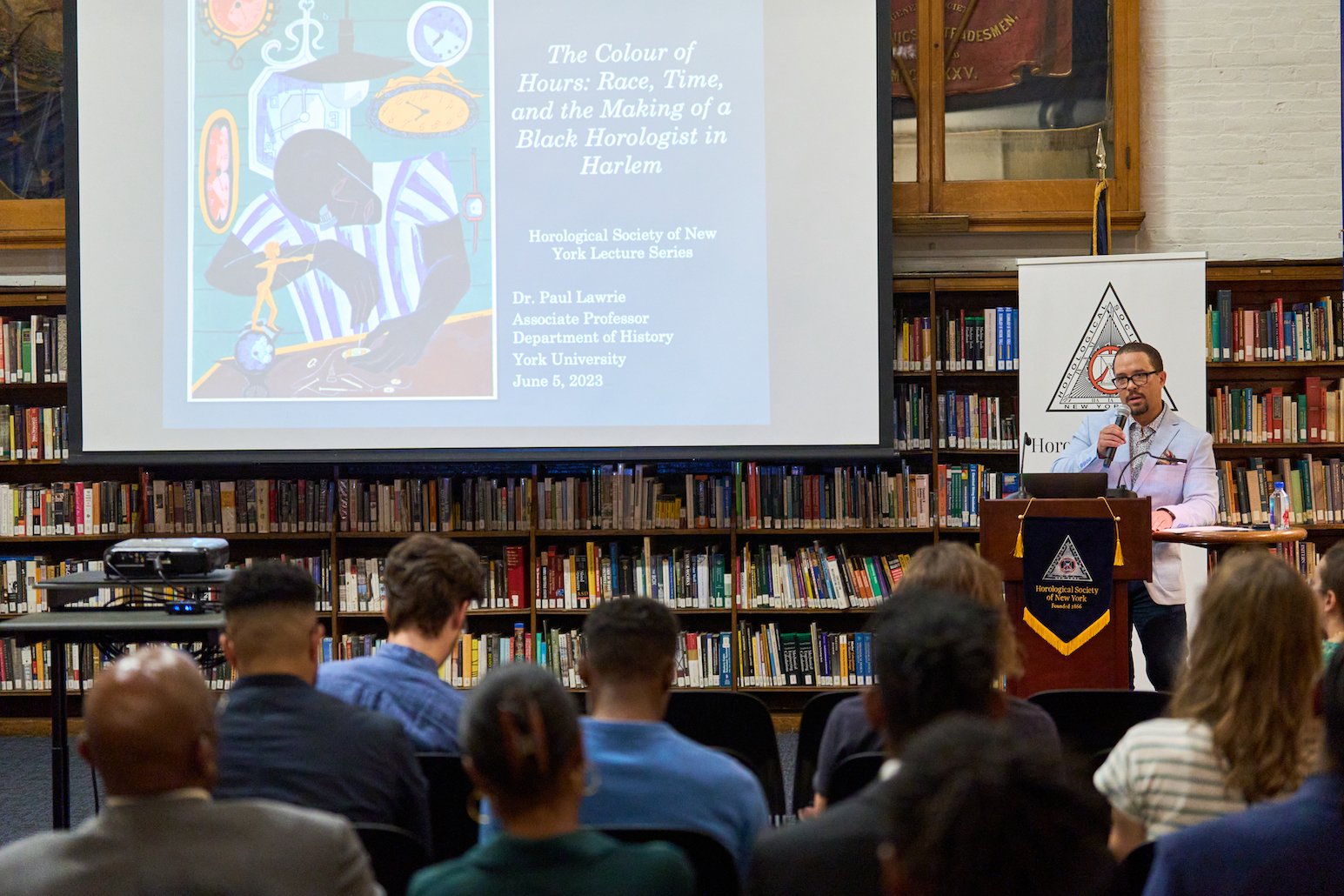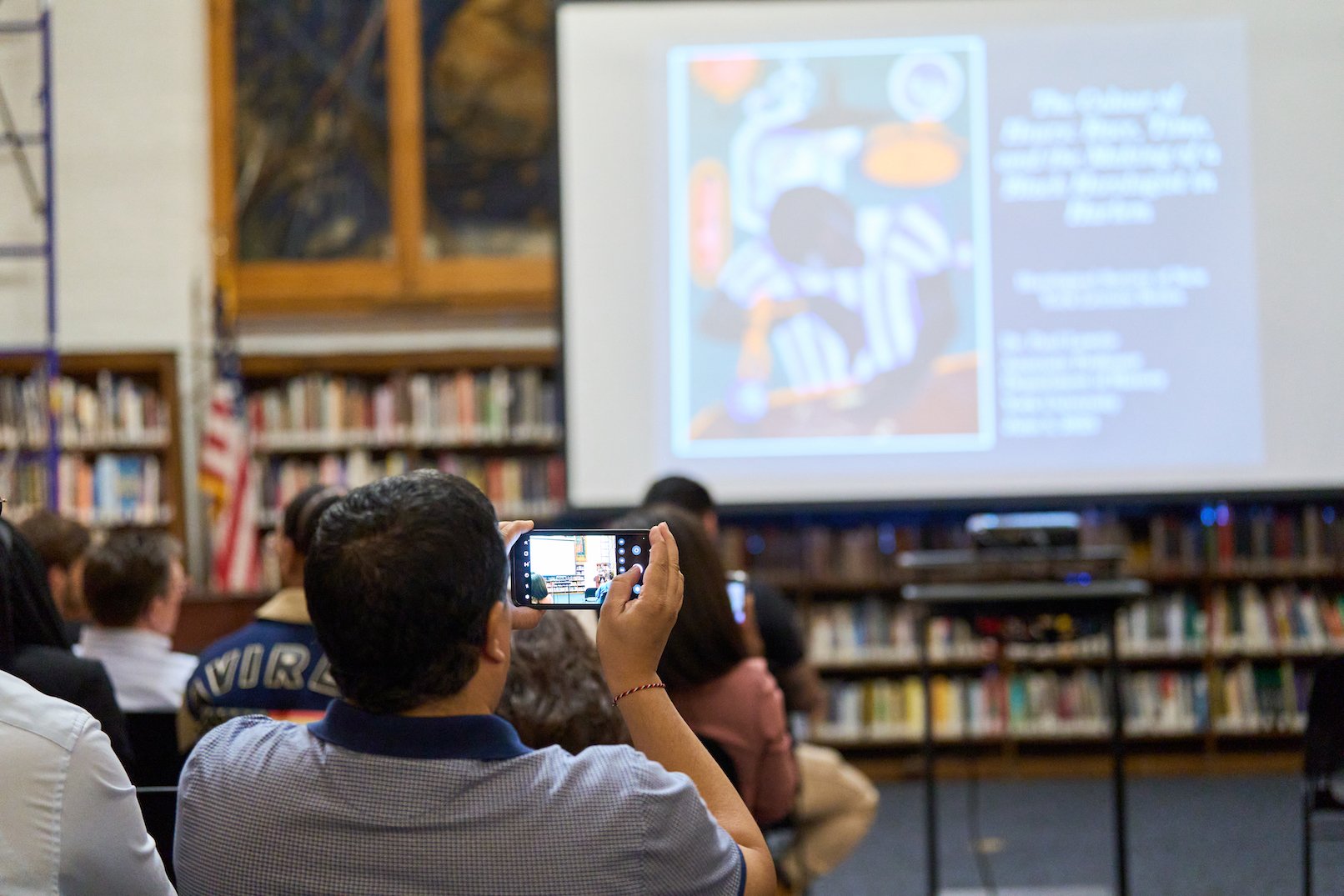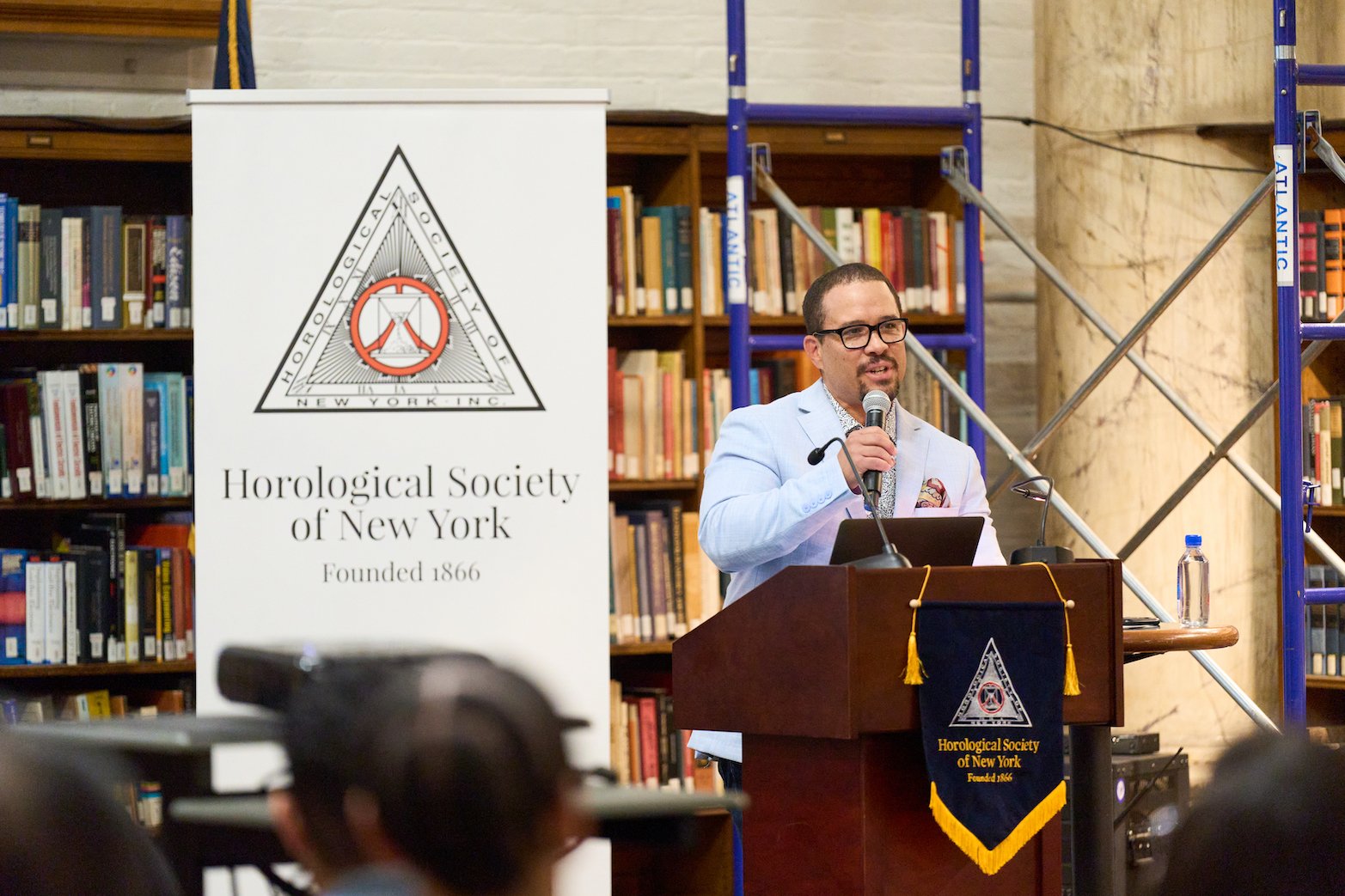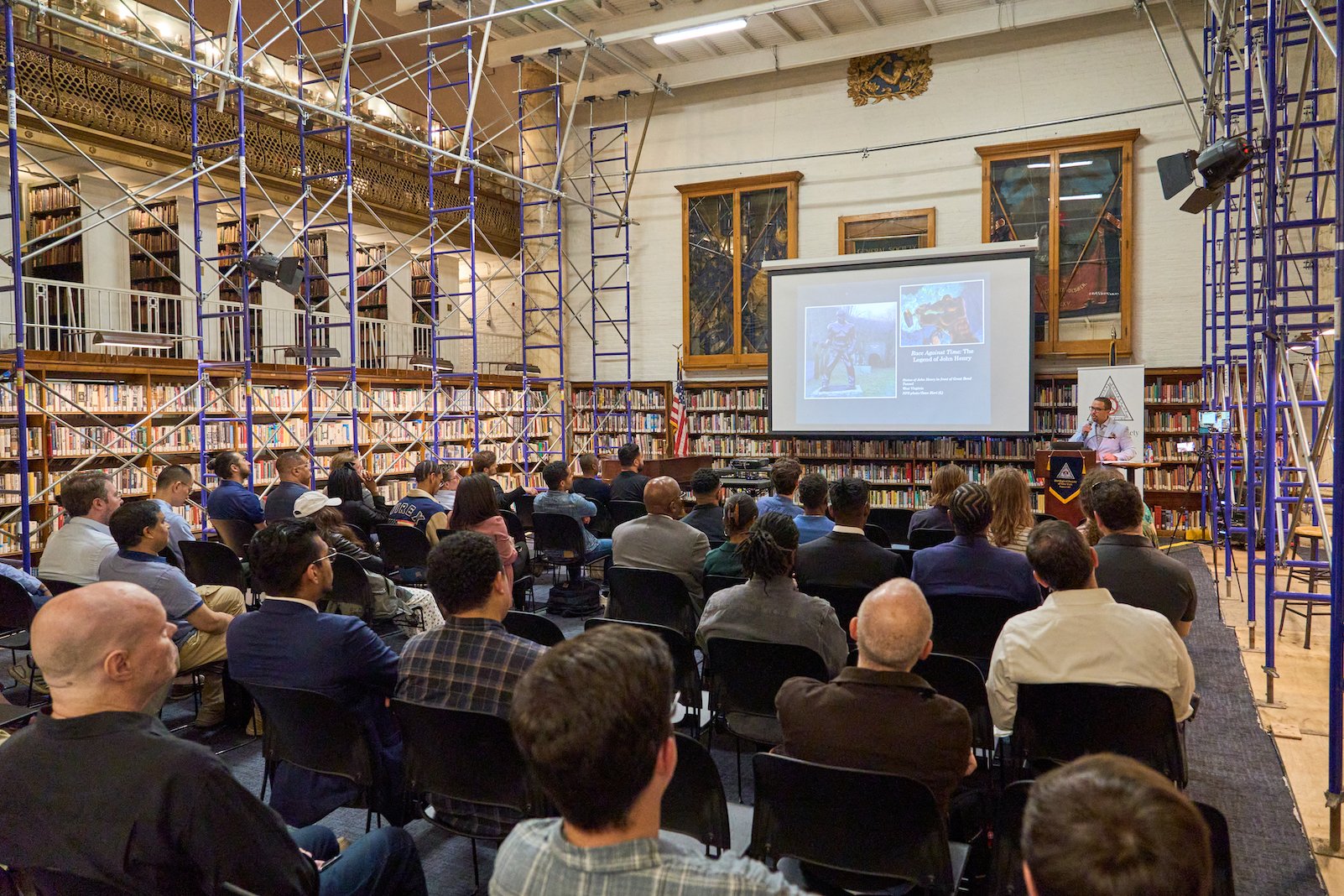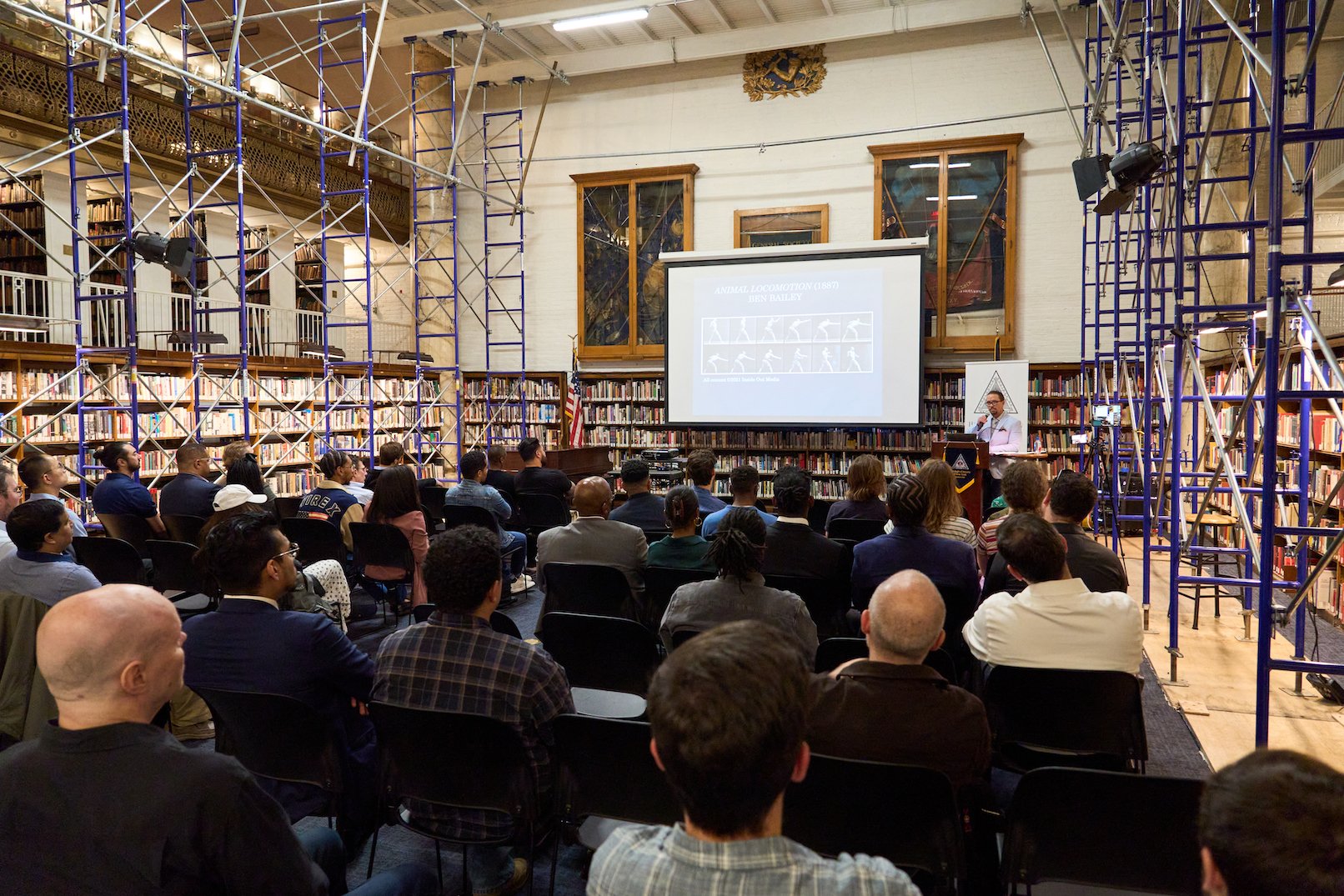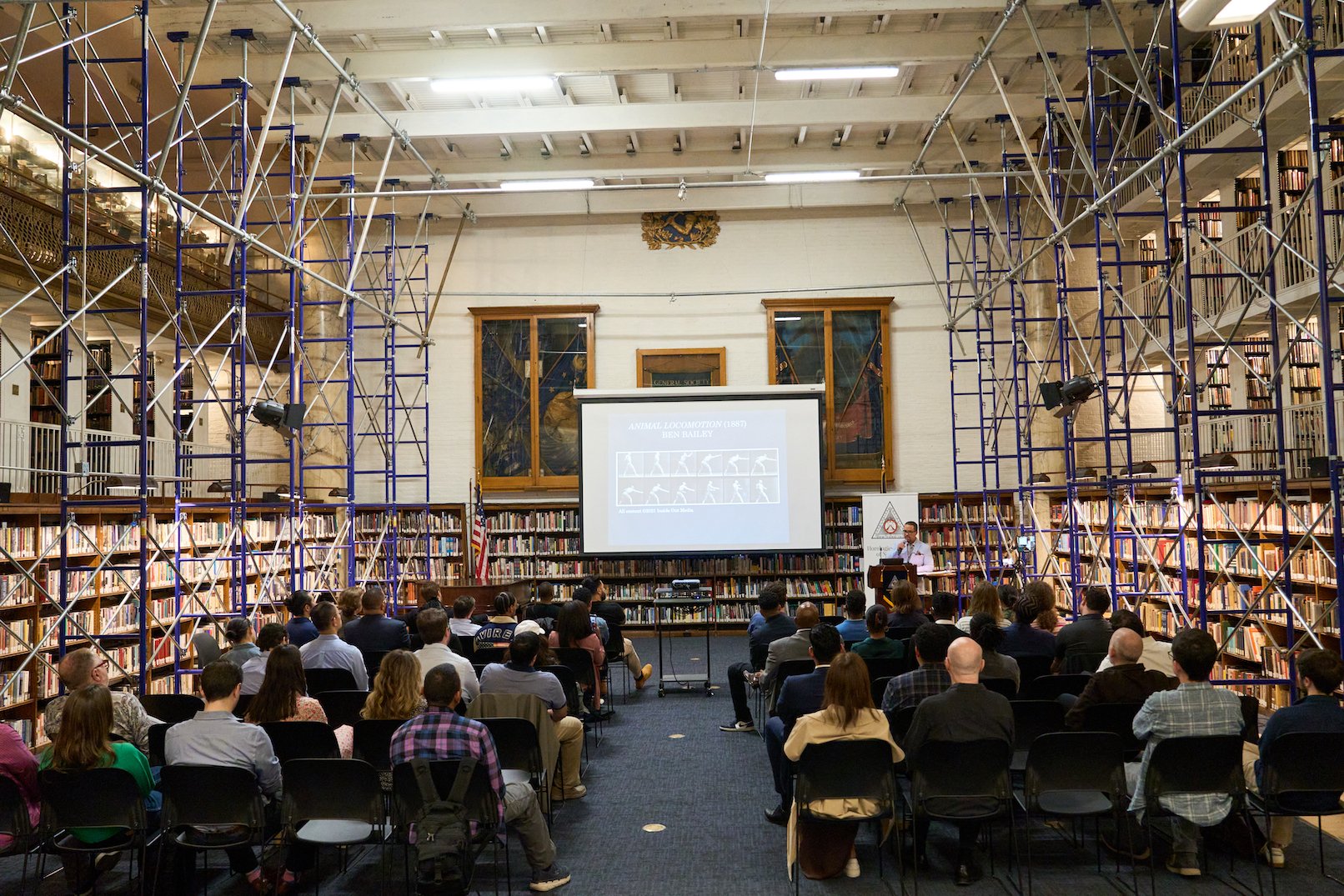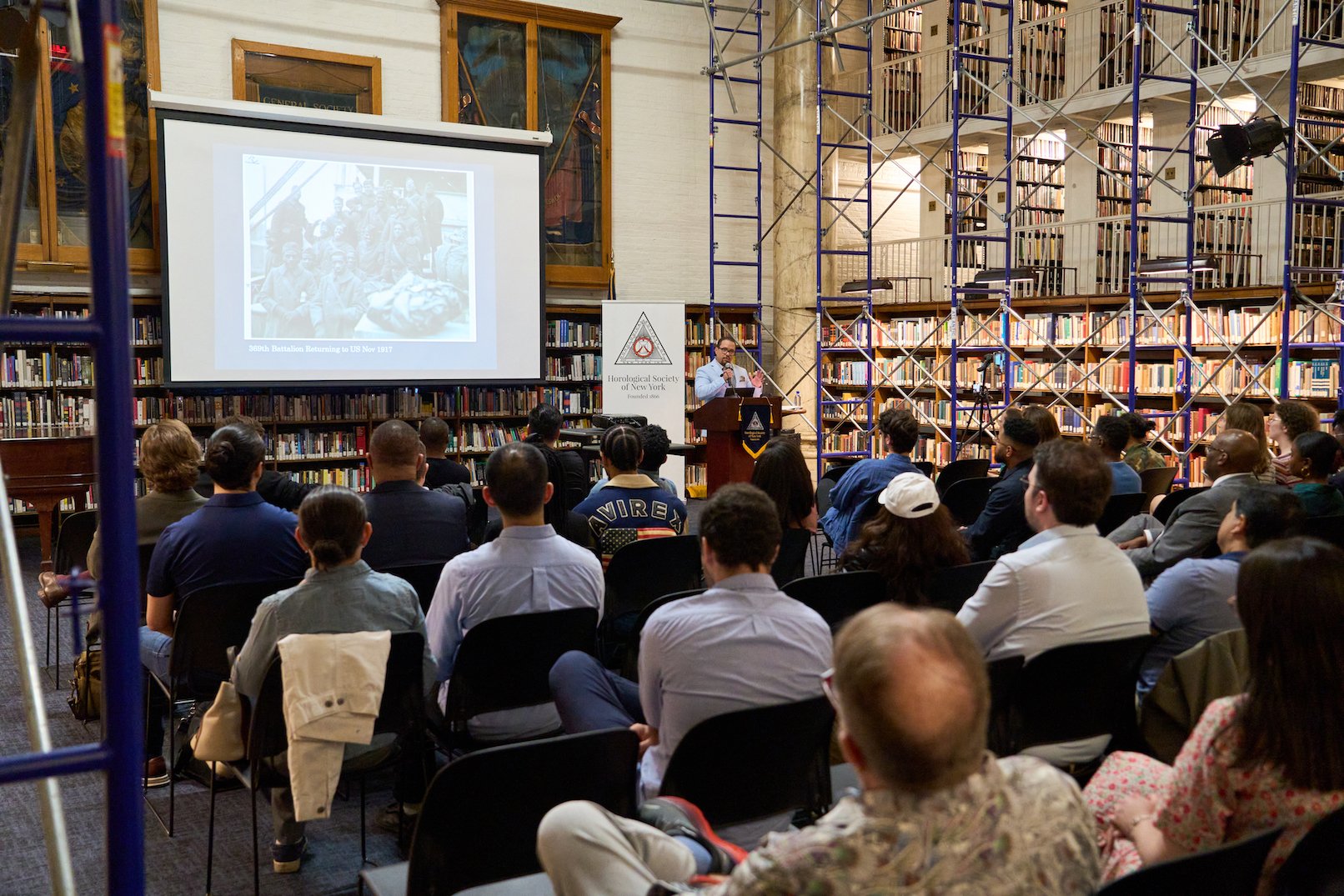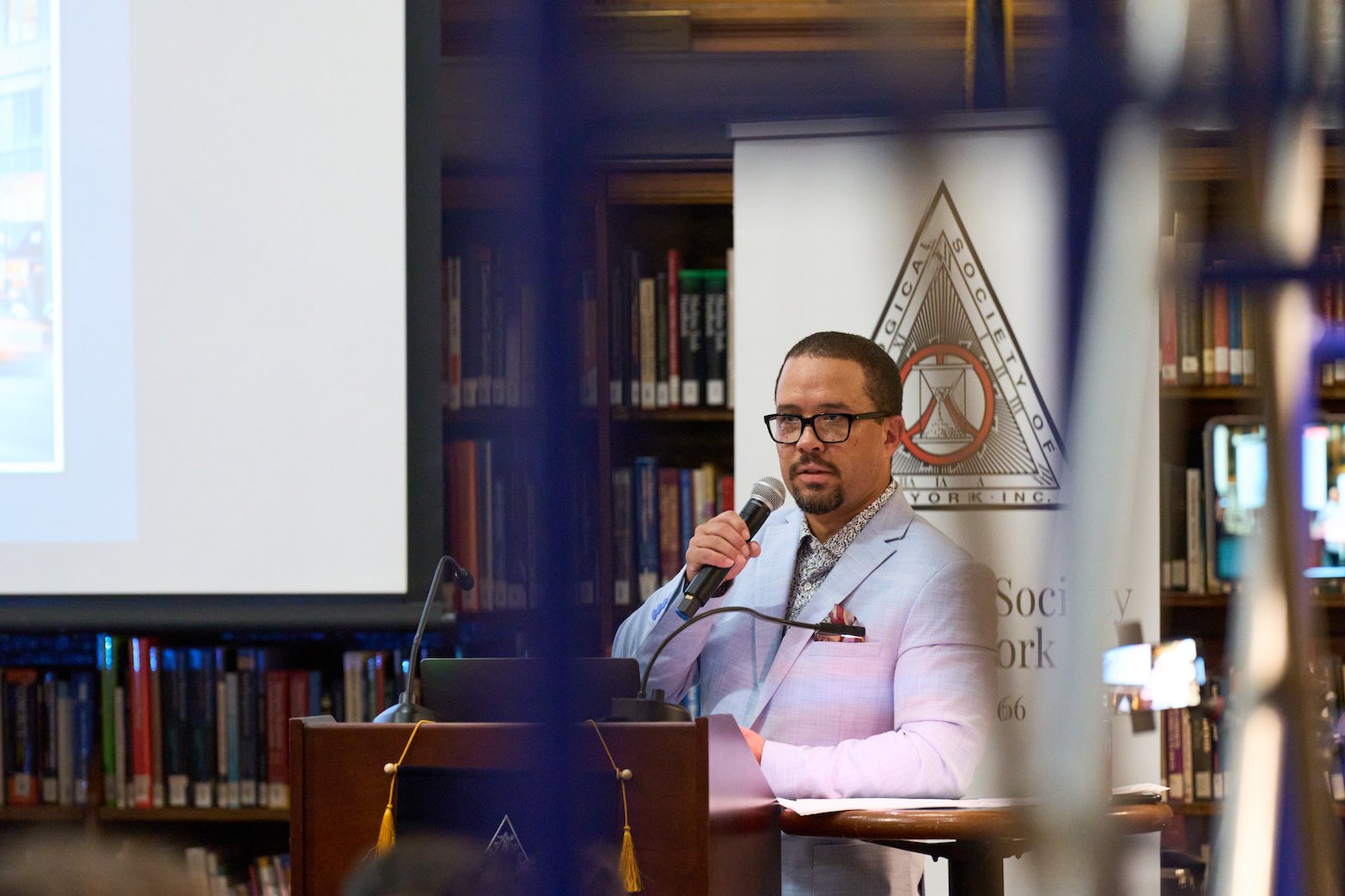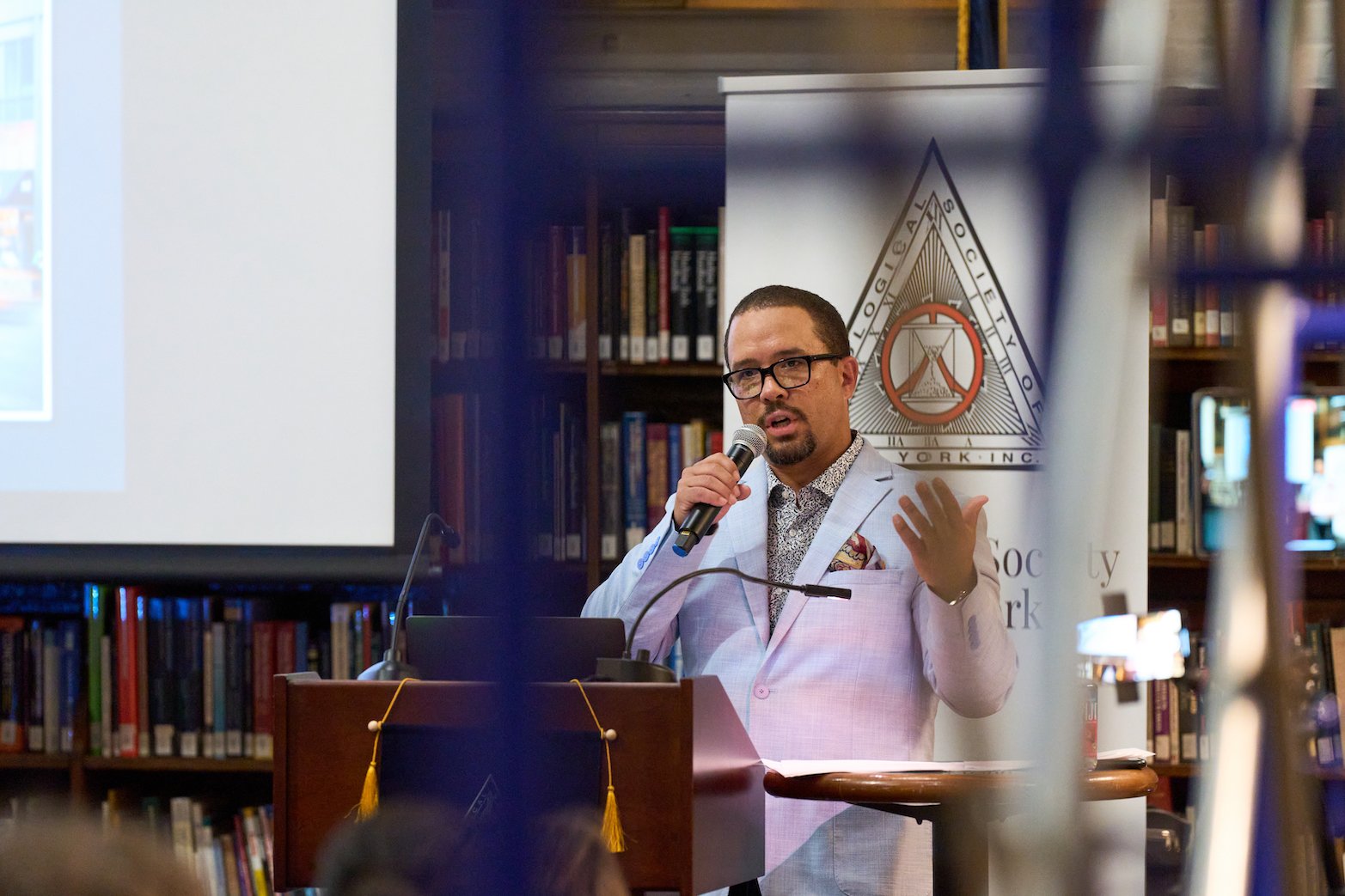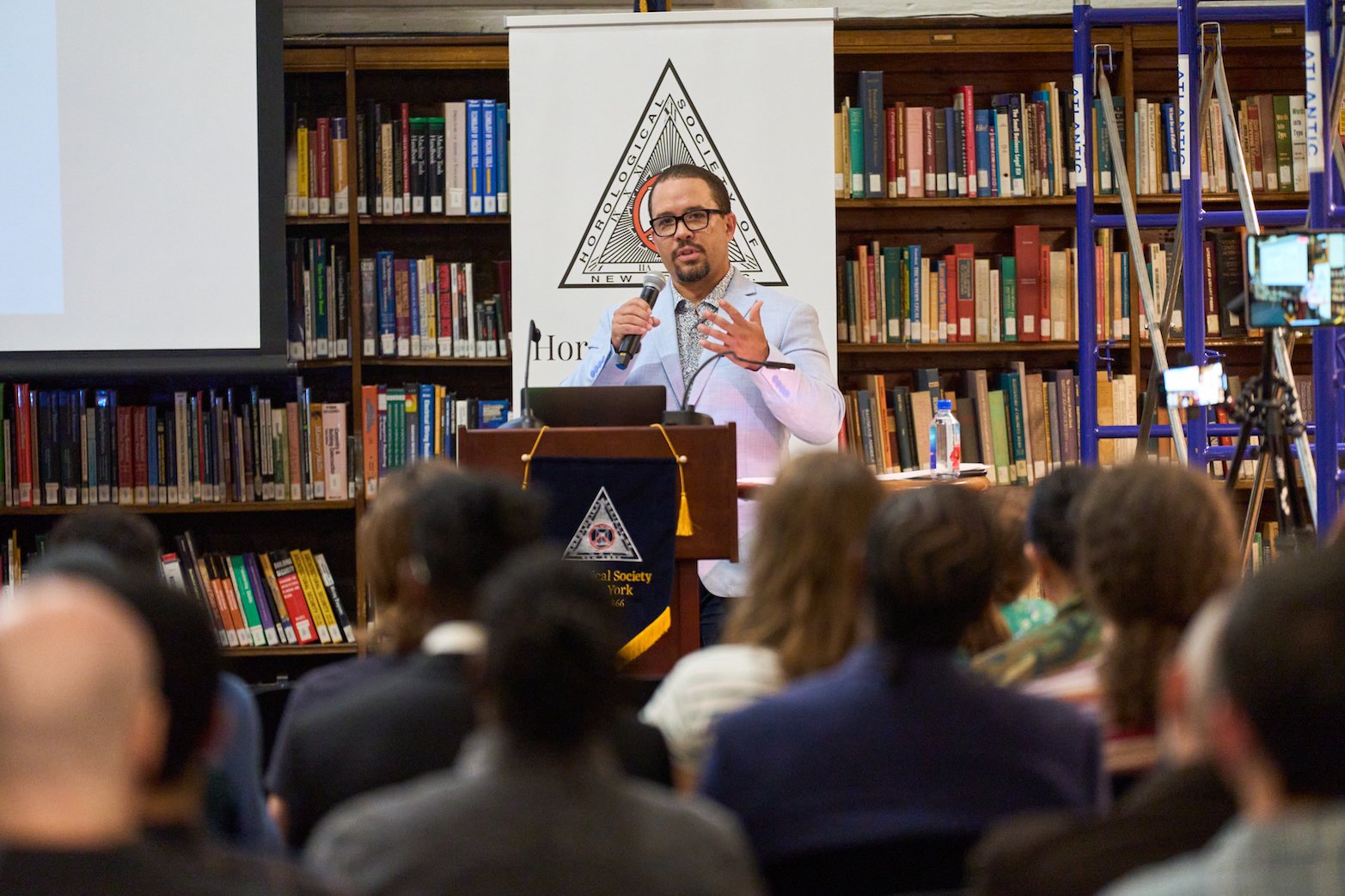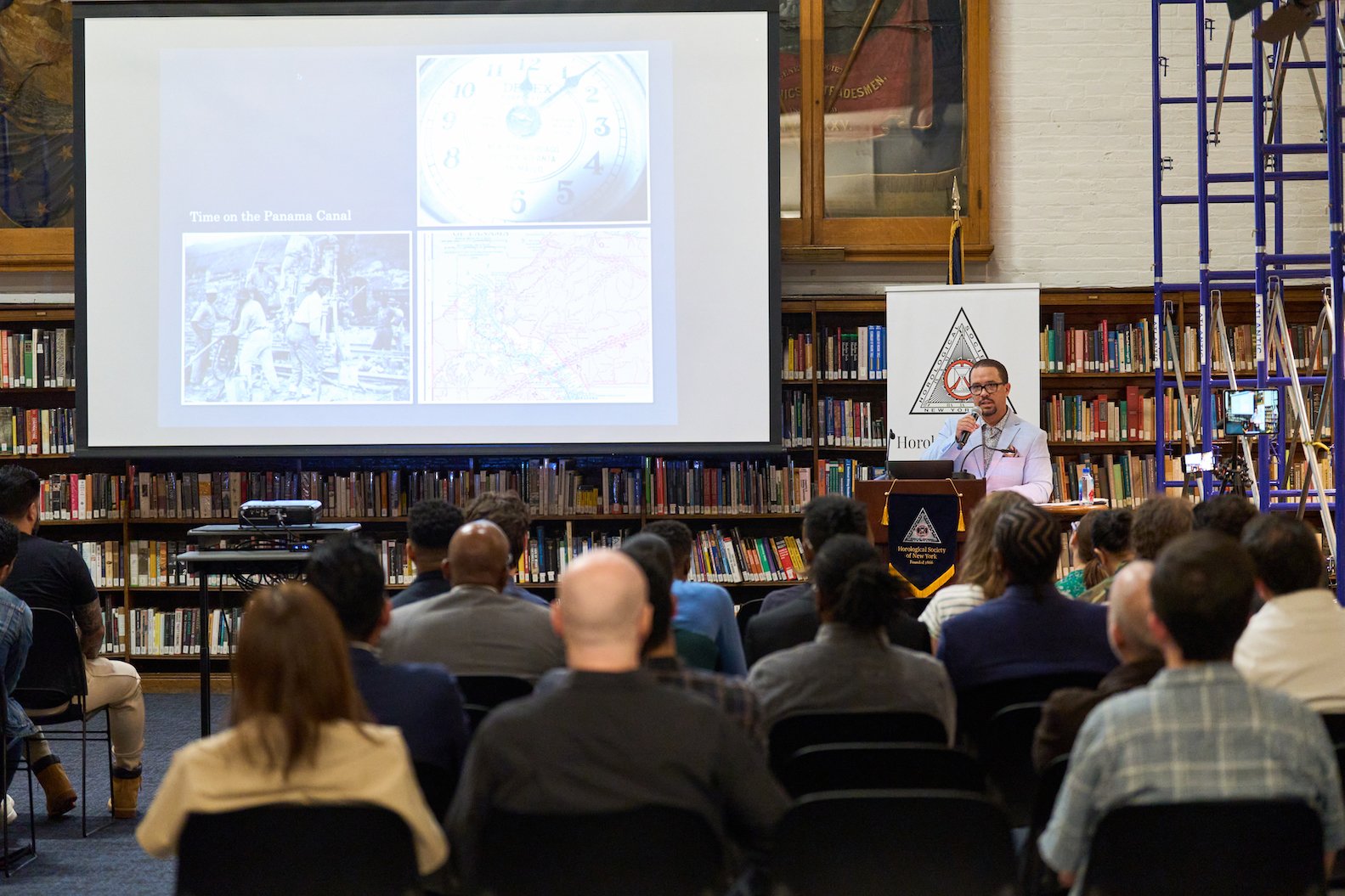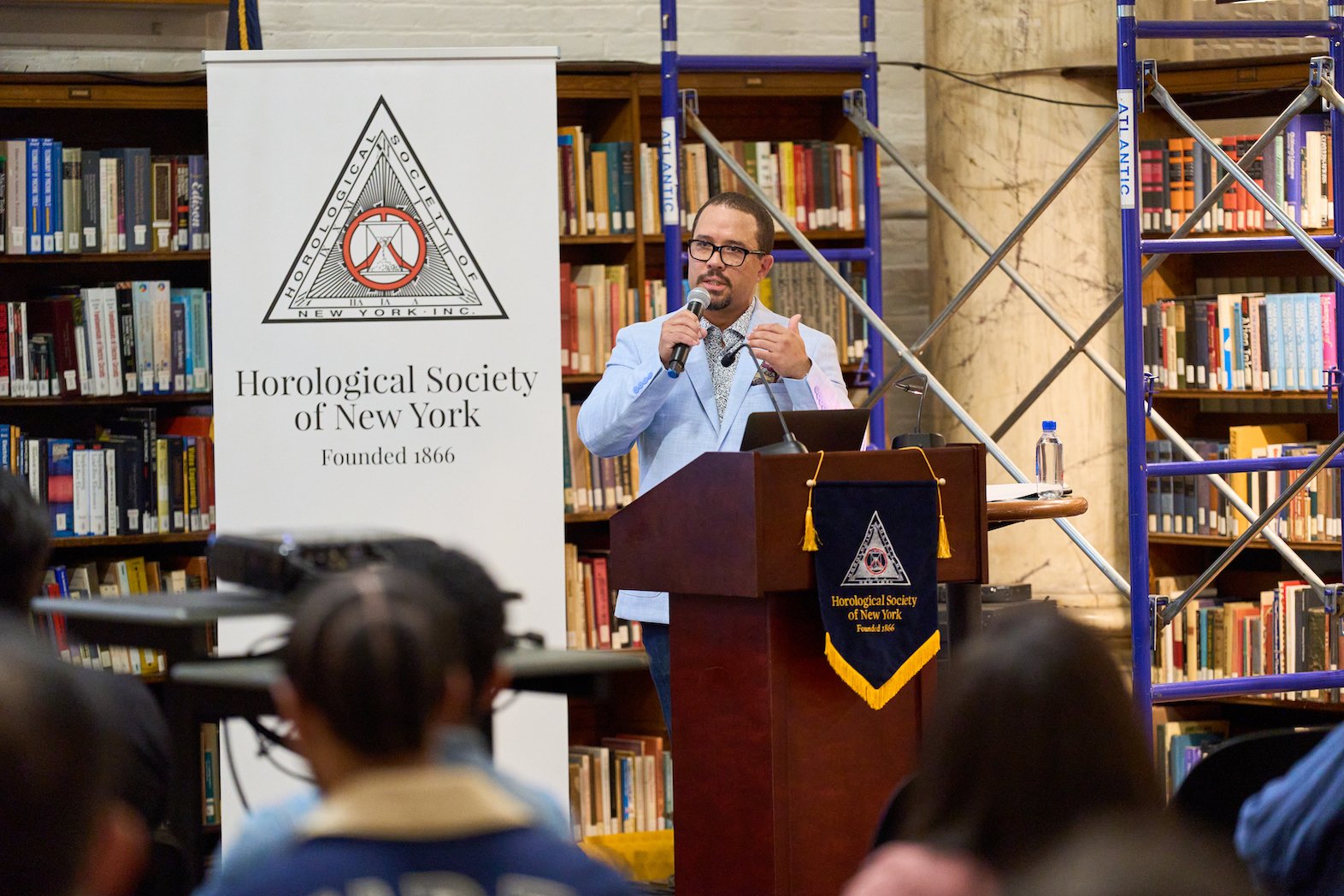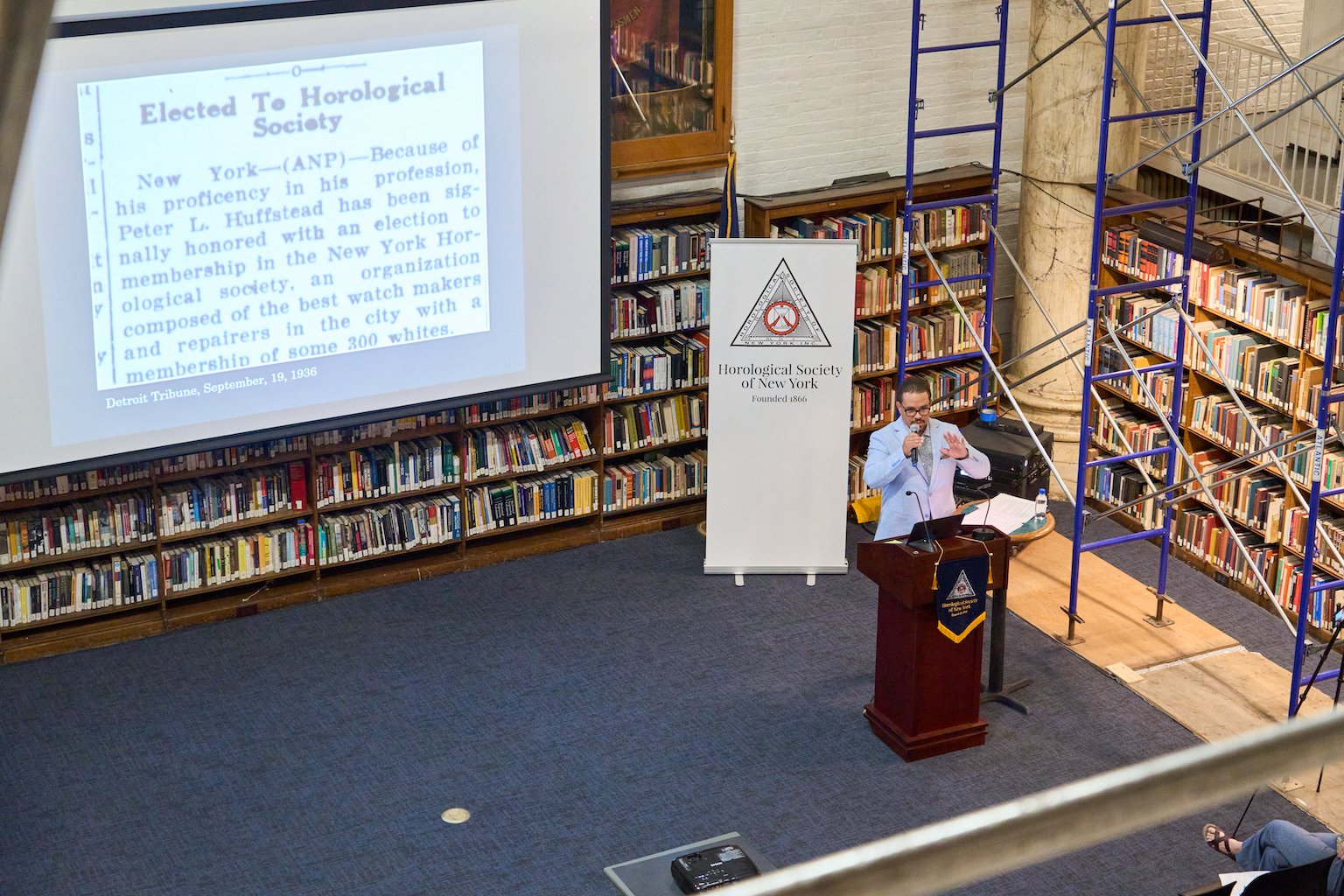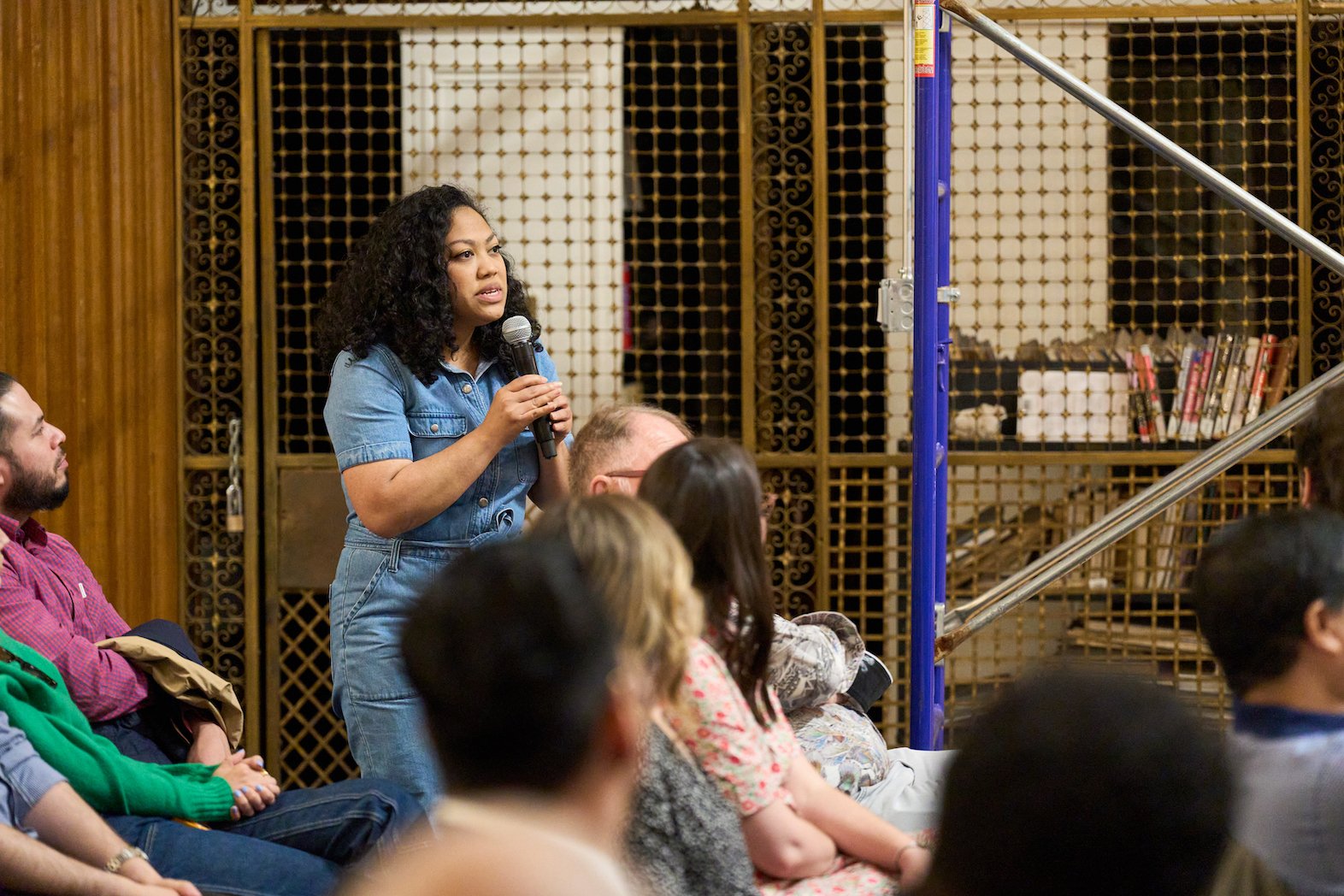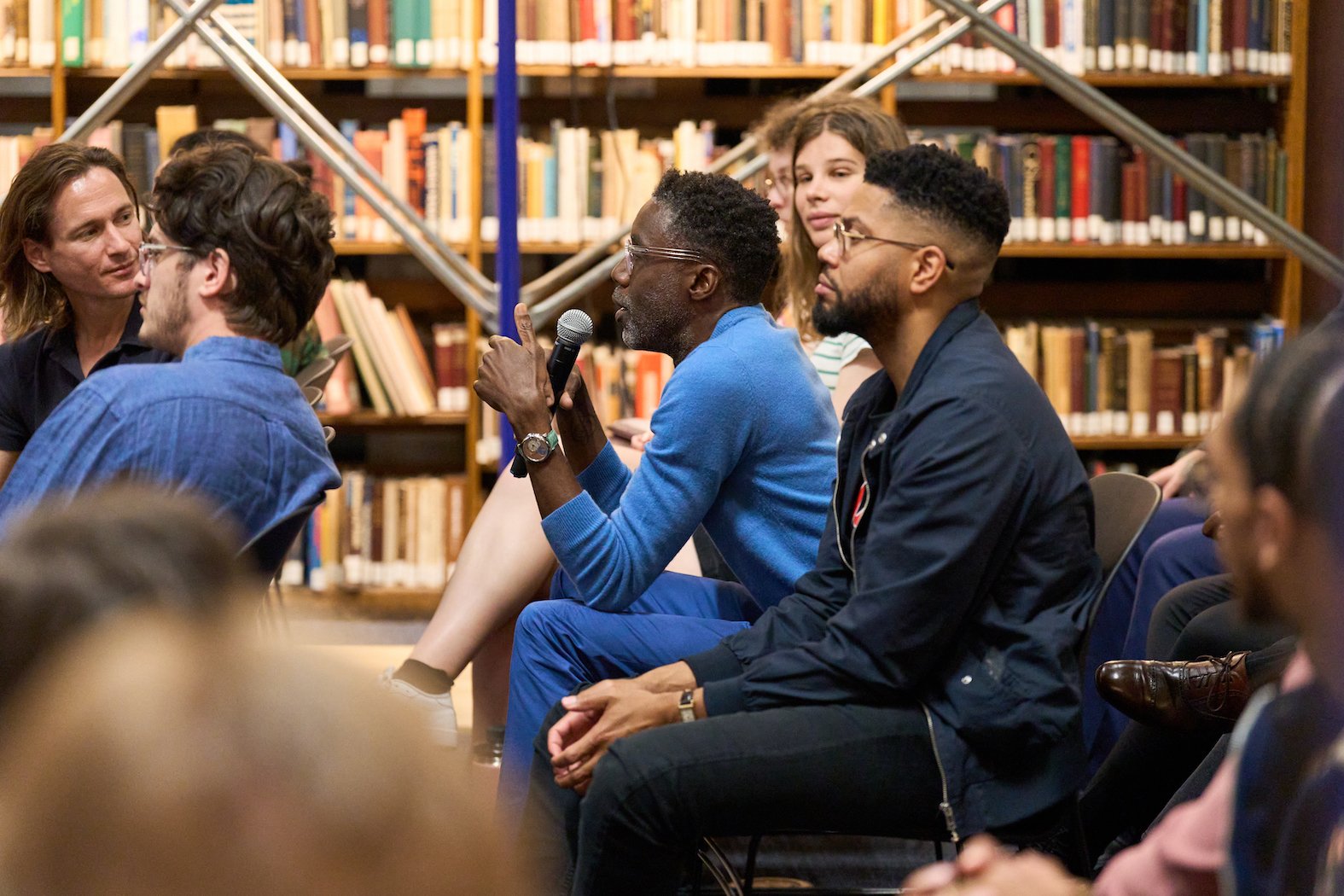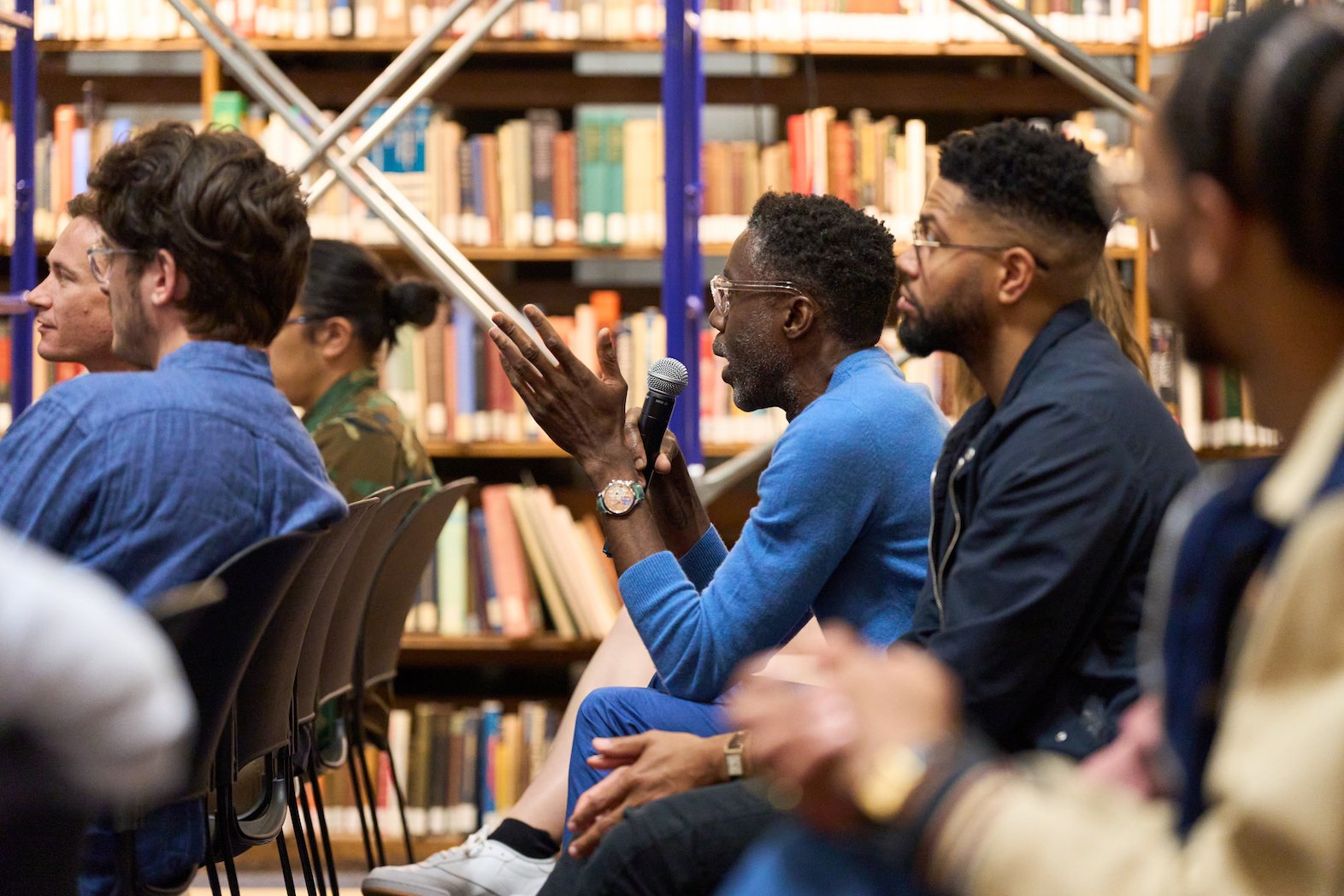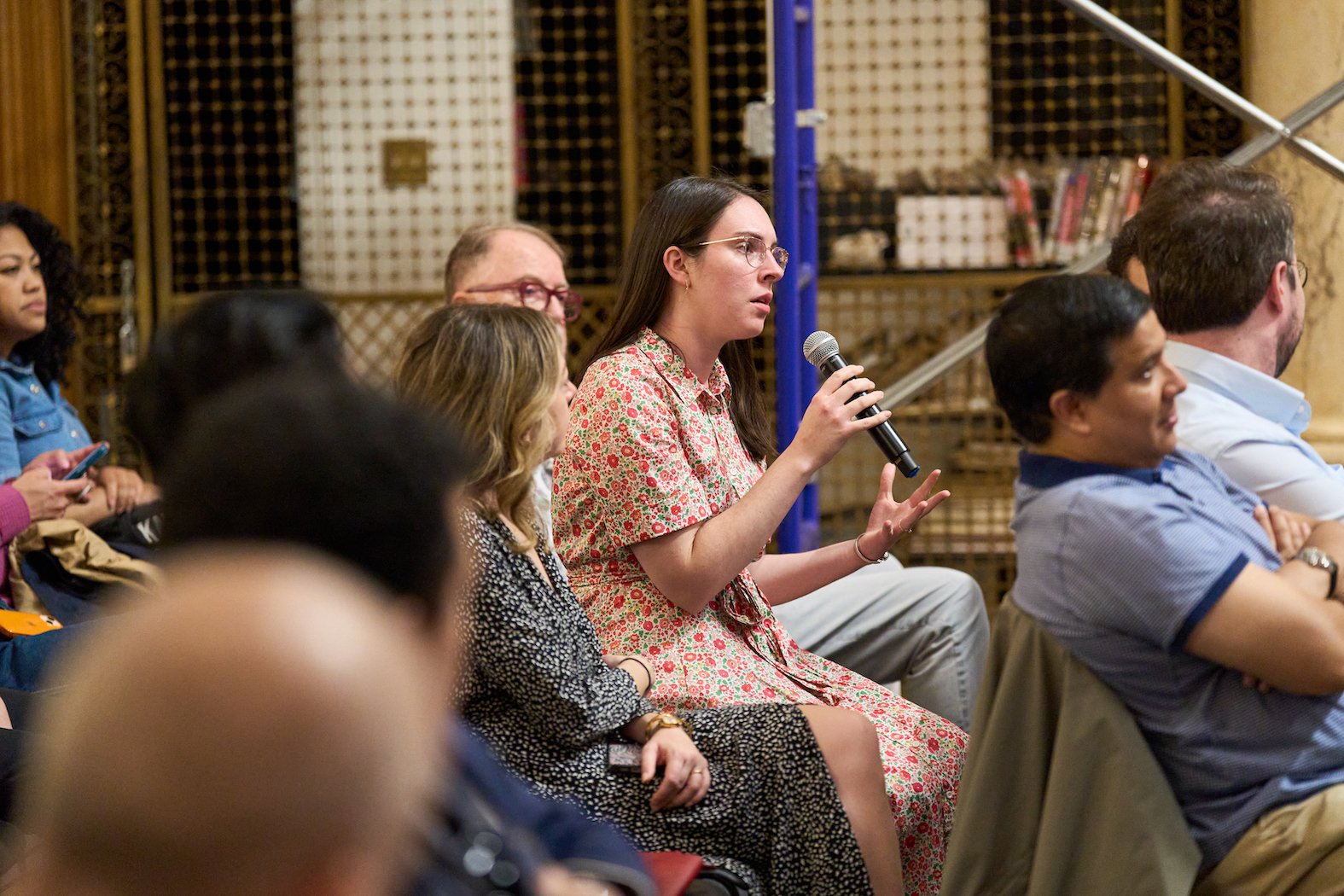Just in Time for the Holidays!
Introducing the HSNY Watch Pouch — a collaborative endeavor between the Horological Society of New York (HSNY), The Armoury, and Jean Rousseau!
This triple-branded watch pouch provides a luxurious fusion of heritage, style and craftsmanship, ensuring your treasured timepieces are protected whether on the go or stored away.
Key Features:
1. Exceptional Craftsmanship: Each HSNY Watch Pouch is meticulously crafted by Jean Rousseau’s skilled artisans who take extreme care in selecting, tanning and finishing leather goods at their in-house tannery and workshop. Our HSNY Watch Pouch’s superior construction ensures that your watches remain safe and secure in style.
2. Premium Materials: We spared no expense in selecting the finest materials. The exterior boasts luxurious goatskin known for its soft and lightweight qualities. The naturally tight grain is durable and will soften and develop a unique patina as it ages alongside your favorite timepiece.
3. Elegant Design: The watch pouch's sleek design is perfect for small and large watches, and its flap closure keeps your watches snugly secured while maintaining easy access. Bonus: HSNY’s modern logo is embossed on the pouch’s flap and adds a touch of sophistication. Each watch pouch is packed in a Jean Rousseau branded box, ensuring safe delivery that is ready to gift!
4. Travel-Ready: Perfect for jet-setters and globetrotters, this pouch is designed with travel in mind. The compact size and lightweight construction make it easy to slip into your luggage or carry-on, safeguarding your collection against dust, moisture, and minor impacts.
Available in four colors: Black, Purple, Burgundy and Blue
Dimensions: 6" tall, 2.5" wide, 1" thick
Price: $85
All proceeds go towards meeting the Horological Society of New York’s mission of advancing the art and science of horology.
